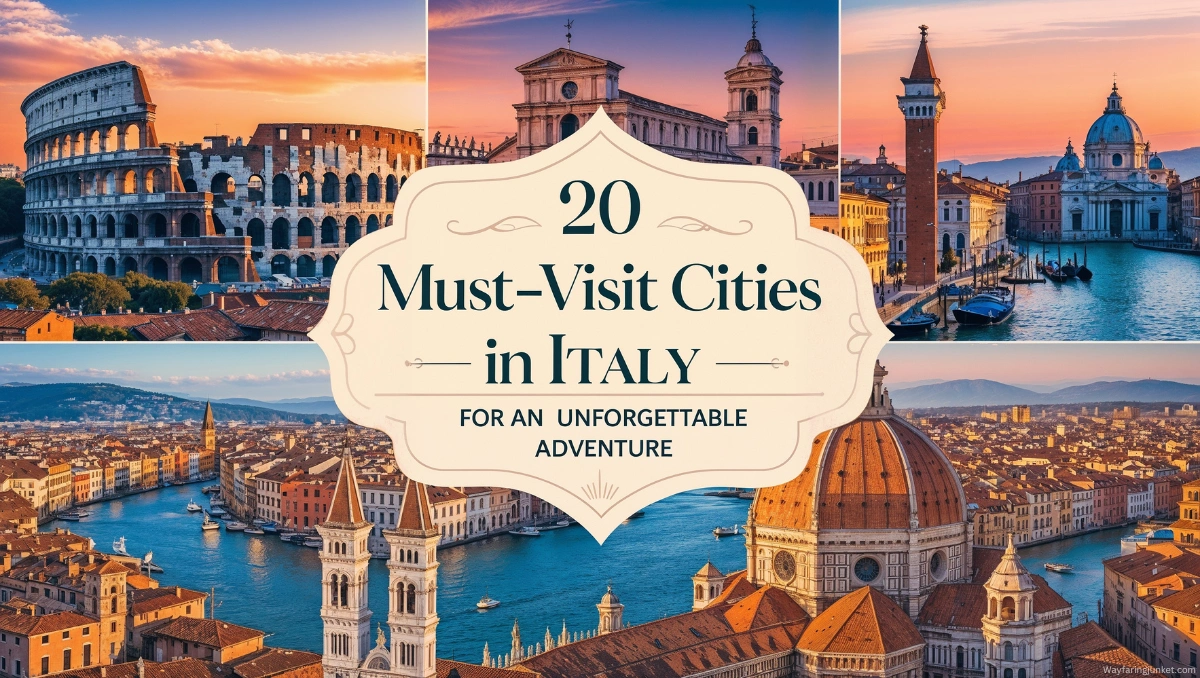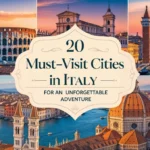20 Must Visit Cities in Italy for an Unforgettable Adventure
Italy is a country that effortlessly captures the hearts of travelers. From ancient ruins and Renaissance art to world-class cuisine and breathtaking landscapes, it offers endless opportunities for exploration.
Whether you’re wandering through historic alleyways, indulging in authentic pasta dishes, or gazing at iconic landmarks, each Italian city has its own story to tell.
In this guide, we’ll explore 20 of the most beautiful cities to visit in Italy — each brimming with culture, history, and unforgettable experiences. Let’s uncover the charm of Italy, one city at a time.
1. Palermo, Sicily
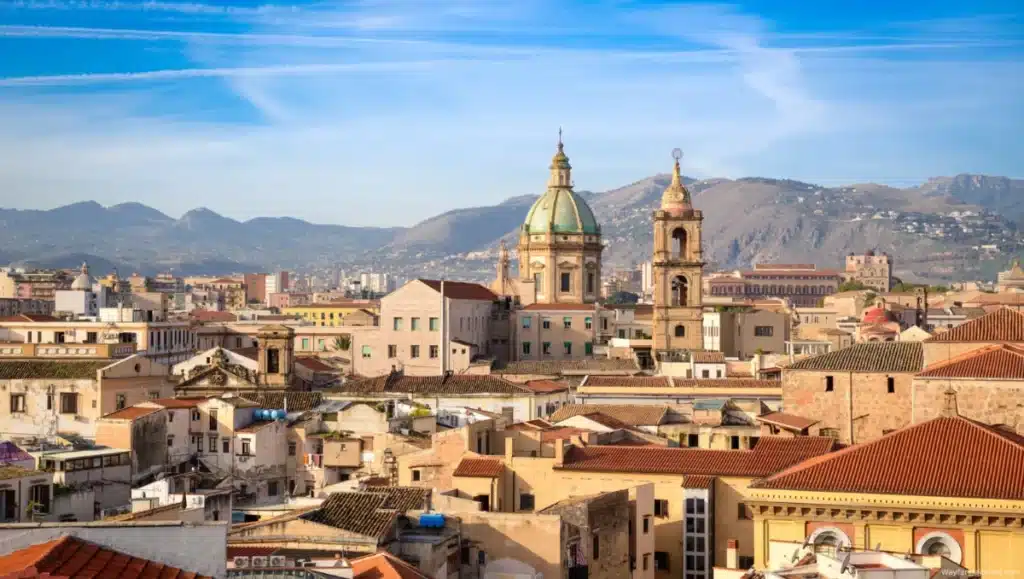
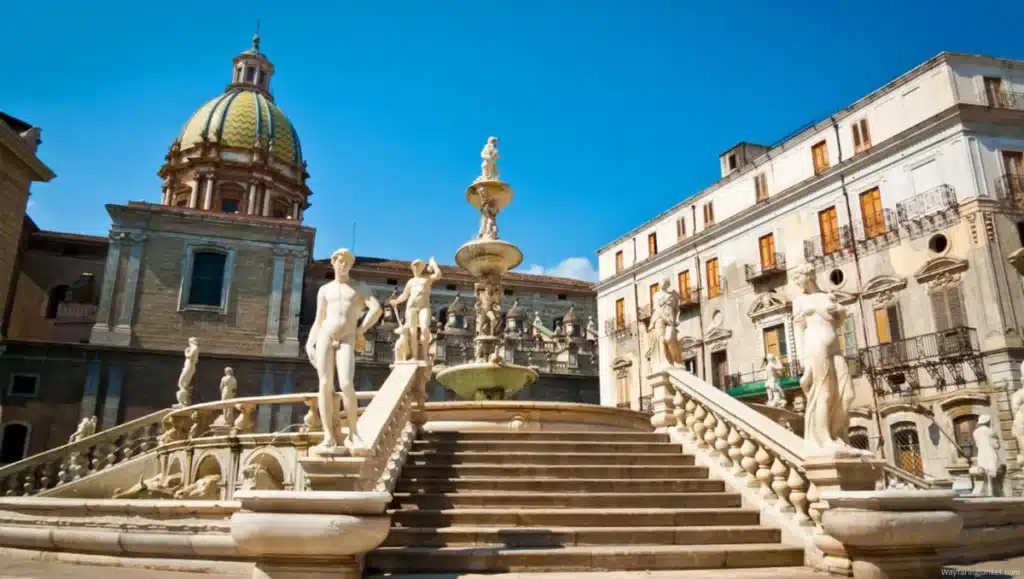

Palermo, the vibrant capital of Sicily, is a city where cultures collide, reflecting a fascinating blend of Arab, Norman, and Italian influences. This coastal gem is brimming with ornate architecture, bustling markets, and a rich culinary heritage, offering visitors an immersive experience.
Best Things to Do in Palermo
1. Explore Palermo Cathedral:
Discover the awe-inspiring Palermo Cathedral, a testament to the city’s rich history with its blend of Norman, Moorish, Gothic, and Baroque architecture. Be sure to explore the royal tombs and head to the rooftop terrace for panoramic views of Palermo and its surroundings.
2. Visit the Norman Palace and Palatine Chapel:
Step into the magnificent Norman Palace, a striking emblem of Palermo’s royal heritage. Within its walls, the Palatine Chapel dazzles with intricate Byzantine mosaics that vividly portray biblical stories. A visit here is an unforgettable journey through art and history.
3. Stroll Through the Markets:
Dive into the vibrant culture of Palermo by visiting its bustling markets: Ballarò, Capo, and Vucciria. Savor authentic Sicilian street food, from crispy arancini (stuffed rice balls) and savory panelle (chickpea fritters) to the deliciously thick sfincione (Sicilian pizza). The aromas and lively atmosphere will leave you enchanted.
4. Discover Art at Palazzo Abatellis:
Art enthusiasts will appreciate a visit to the Galleria Regionale della Sicilia in Palazzo Abatellis. This museum showcases remarkable medieval and Renaissance artworks, including Antonello da Messina’s iconic painting, Annunciation. The museum’s tranquil courtyard also offers a pleasant retreat.
5. Explore the Capuchin Catacombs:
For a fascinating yet eerie experience, visit the Capuchin Catacombs. These underground corridors house the remarkably preserved, mummified remains of Palermo’s residents, providing a haunting yet insightful glimpse into the city’s cultural and religious history. It’s a truly unforgettable stop for those intrigued by the past.
What to Eat in Palermo
Palermo offers a rich blend of street food and traditional Sicilian cuisine. Some dishes to try include:
- Arancini: Stuffed rice balls, often filled with ragù, cheese, or peas.
- Panelle: Crispy chickpea fritters, commonly served in a sandwich.
- Sfincione: Sicilian pizza with a thick crust, topped with tomatoes, onions, anchovies, and breadcrumbs.
- Pasta alla Norma: A traditional pasta dish with eggplant, tomato sauce, and ricotta salata.
- Fresh Seafood: Enjoy local seafood, including grilled fish and pasta with seafood, straight from the Mediterranean.
2. Matera, Basilicata
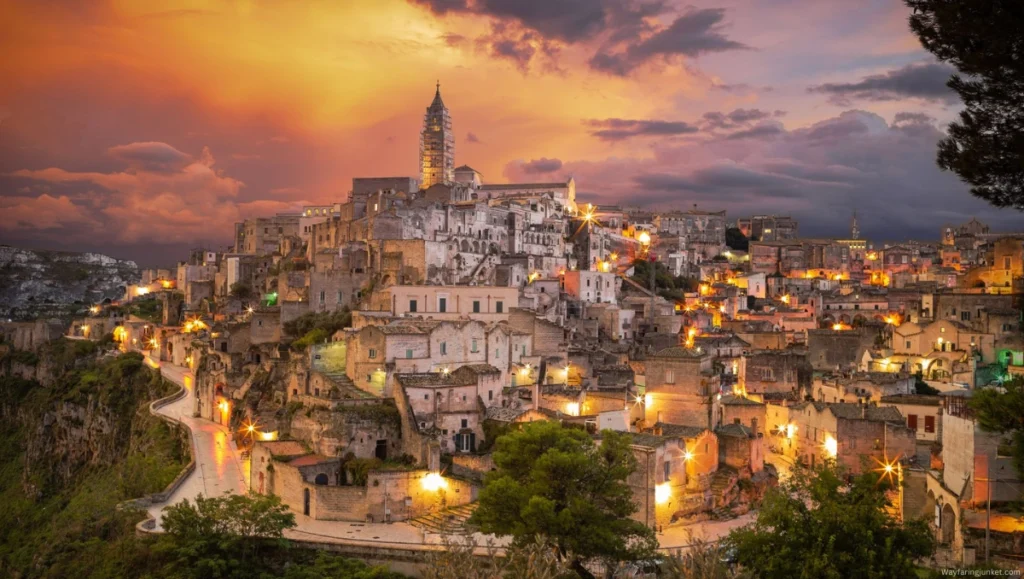
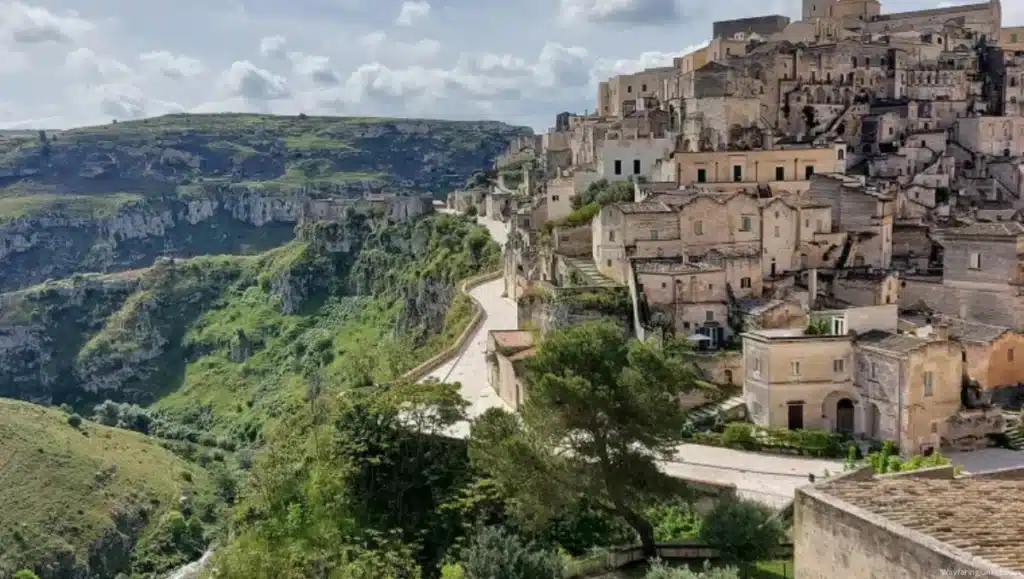

Matera, one of the oldest continuously inhabited cities in the world, is a UNESCO World Heritage Site that offers a captivating journey through time. Known for its ancient cave dwellings called Sassi di Matera, the city presents a striking landscape of stone-carved homes, winding alleyways, and historic churches embedded into the cliffs.
Best Things to Do in Matera
1. Explore the Sassi:
Wander through the captivating cave districts of Sasso Barisano and Sasso Caveoso, where ancient dwellings, churches, and artisanal shops are carved directly into the limestone. The maze-like alleys and stone archways offer a glimpse into Matera’s rich history and enduring charm, making it a perfect setting for discovery and exploration.
2. Step into Casa Grotta di Vico Solitario:
Experience the authentic daily life of Matera’s former inhabitants at Casa Grotta di Vico Solitario. This meticulously preserved cave house, with its rustic furnishings and carefully restored details, offers a poignant look into the traditional cave-dwelling lifestyle.
3. Discover the Enchanting Rock Churches:
Immerse yourself in the spiritual beauty of Matera’s Rupestrian Churches, where intricate frescoes and ancient altars are etched into stone. Highlights include the dramatic Santa Maria de Idris, perched on a cliff with panoramic views, and San Pietro Barisano, the city’s largest cave church, adorned with stunning religious artwork.
4. Visit Matera Cathedral:
Standing proudly at the city’s highest point, Matera Cathedral offers breathtaking vistas of the Sassi below. Step inside to admire its magnificent Romanesque architecture, ornate gilded details, and awe-inspiring medieval frescoes that narrate stories of faith and artistry. Don’t forget to pause and take in the stunning contrast between the grandeur of the cathedral and the rustic charm of the surrounding cave dwellings.
What to Eat in Matera
Indulge in authentic Basilicata cuisine at one of Matera’s charming trattorias. Local specialties include:
- Orecchiette con Cime di Rapa: A traditional pasta dish served with turnip greens, beloved by locals.
- Pane di Matera: A rustic bread with a crispy crust and soft interior, protected by PDO (Protected Designation of Origin) status.
- Aglianico del Vulture Wine: A bold red wine that pairs beautifully with the hearty local dishes.
3. Trieste, Friuli Venezia Giulia

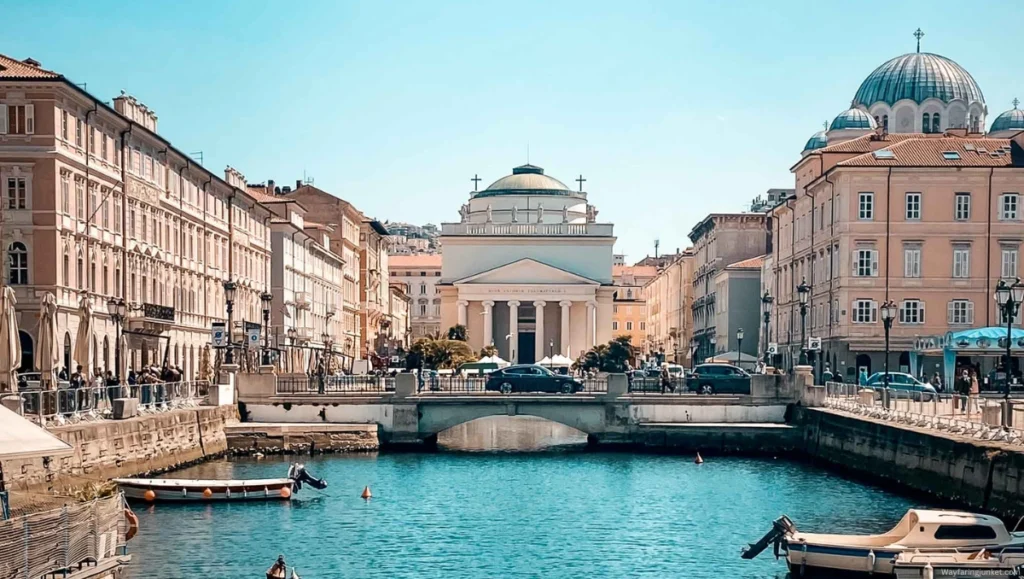
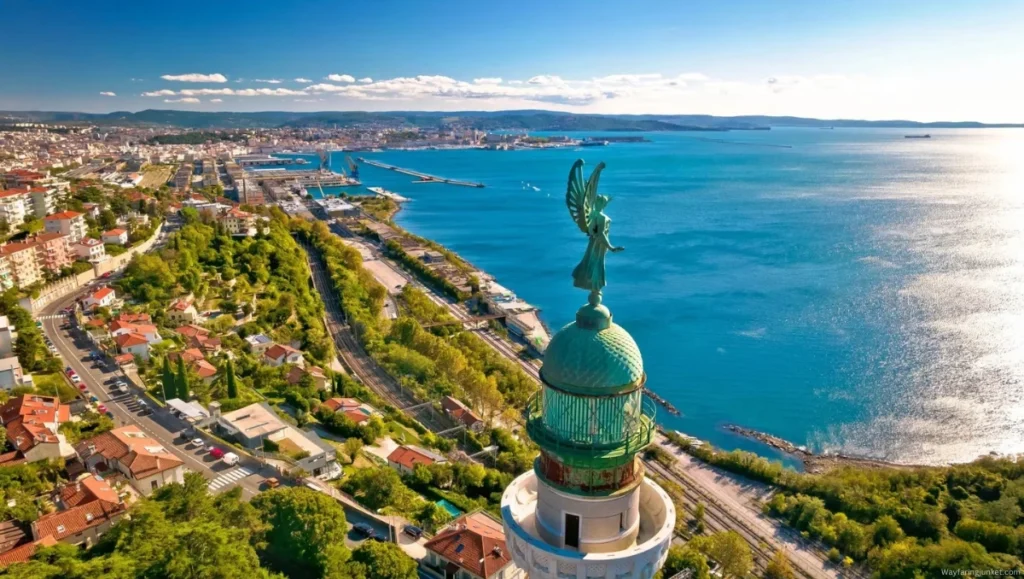
Trieste, a captivating port city in northeastern Italy, is a cultural crossroads where Italian, Slovenian, and Austrian influences converge. Perched on the Adriatic Sea, Trieste boasts a rich maritime history, stunning architecture, and a vibrant literary heritage.
What to Do in Trieste
1. Piazza Unità d’Italia:
Begin your Trieste adventure at Piazza Unità d’Italia, one of Europe’s largest seaside squares. Surrounded by elegant neoclassical buildings and offering stunning views of the Adriatic Sea, it’s the perfect spot to relax at a waterfront café and take in the city’s lively atmosphere.
2. Castello di Miramare:
Step into the 19th-century world of Castello di Miramare, built by Archduke Ferdinand Maximilian of Austria. Explore its luxurious interiors with preserved period furnishings, then wander the lush seaside gardens that provide picturesque views of the Adriatic coastline.
3. Canal Grande:
Take a scenic stroll along Canal Grande, a charming waterway lined with cafés, boutiques, and local shops. Don’t miss the statue of James Joyce, a tribute to the literary icon’s time spent in Trieste. It’s the ideal place to pause and enjoy the city’s maritime charm.
4. Revoltella Museum:
Art lovers will appreciate the Revoltella Museum, which houses an impressive collection of modern and contemporary art. Its elegant architecture and well-curated exhibits provide an insightful journey through the region’s artistic evolution.
5. Risiera di San Sabba:
Gain a deeper understanding of Trieste’s history with a visit to the Risiera di San Sabba, a former World War II concentration camp turned memorial museum. The powerful exhibits serve as a sobering reminder of the city’s wartime past.
6. Museo Civico di Storia Naturale:
Perfect for families and curious minds, the Museo Civico di Storia Naturale offers fascinating exhibits on the region’s biodiversity and prehistoric past. Highlights include the largest complete dinosaur skeleton discovered in Italy, sure to captivate visitors of all ages.
7. Castello di San Giusto:
Perched atop a hill, Castello di San Giusto provides breathtaking panoramic views of Trieste and the Adriatic Sea. Explore the historic fortress, visit the on-site museum featuring ancient artifacts, and admire the nearby San Giusto Cathedral, renowned for its intricate mosaics and Romanesque architecture.
8. Grotta Gigante:
For a thrilling underground adventure, venture into Grotta Gigante, one of the world’s largest accessible caves. Guided tours reveal its awe-inspiring chambers adorned with colossal stalactites and stalagmites, making it an unforgettable experience for nature enthusiasts.
What to Eat in Trieste
Trieste’s cuisine is a unique blend of Italian and Central European flavors. Some dishes to try include:
- Jota: A hearty traditional stew made with beans, sauerkraut, and pork, perfect for cooler days. Its robust flavors are a reflection of Trieste’s Austro-Hungarian heritage.
- Strucolo de Pomi: Trieste’s take on apple strudel, this dessert is often dusted with powdered sugar and served with a side of whipped cream. It’s a delightful nod to the city’s Central European influence.
- Seafood Specialties: Enjoy fresh Adriatic seafood at a local trattoria. Popular choices include grilled sardines, calamari, and seafood risotto made with the catch of the day. Pair your meal with a glass of local white wine like Malvasia or Vitovska.
- Bollito Misto: A comforting dish of mixed boiled meats, often including beef, pork, and chicken. It’s typically served with a variety of sauces like salsa verde (parsley sauce) and mostarda (candied fruit in mustard syrup).
- Gnochi de Pan con Ragù: These bread-based gnocchi are a traditional Triestine specialty, made from stale bread, milk, and flour. They’re served with a rich meat ragù sauce, making for a satisfying and rustic meal.
- Presnitz: A festive pastry made with puff pastry and filled with a mixture of nuts, dried fruits, and spices. It’s a popular dessert during holidays and celebrations in Trieste.
- Sardoni in Saor: Fresh sardines marinated in vinegar, onions, raisins, and pine nuts. This Venetian-influenced dish is a perfect blend of sweet and sour flavors.
- Goulash: A nod to the city’s Austro-Hungarian roots, Trieste’s version of goulash is a slow-cooked beef stew flavored with paprika, onions, and garlic. It’s often paired with polenta or potatoes.
- Fave Triestine: Fave Triestine are traditional almond-shaped cookies made with almonds, sugar, and egg whites. These colorful treats are often enjoyed during All Saints’ Day in early November. They come in three classic colors: white (almond-flavored), pink (rose-flavored), and brown (chocolate-flavored). Pair them with a glass of sweet dessert wine for the perfect finish to your meal.
4. Perugia, Umbria

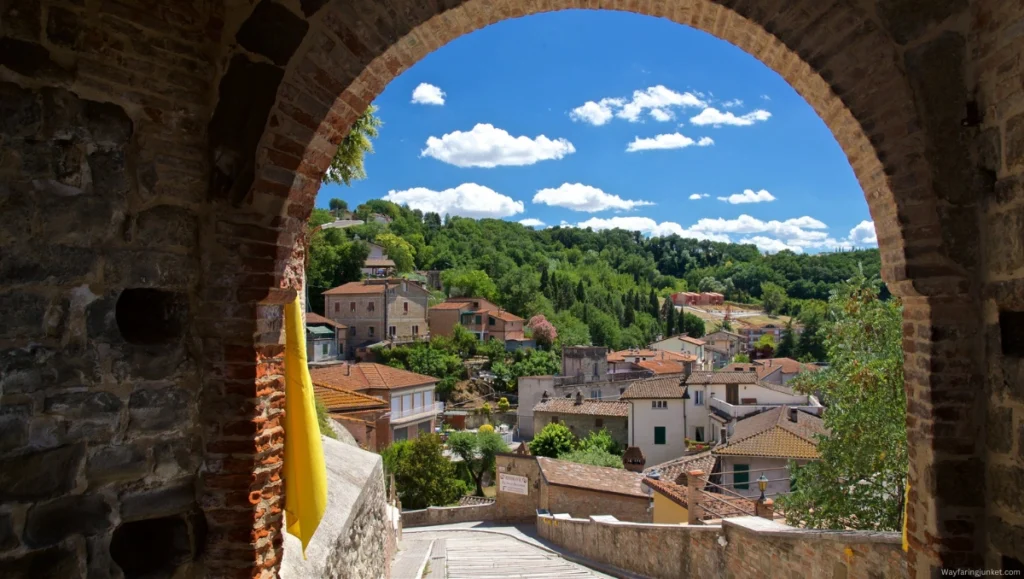

Perugia, the capital of Italy’s Umbria region, is a hilltop city steeped in history and vibrant culture. With its medieval architecture, winding cobblestone streets, and lively piazzas, it offers a perfect blend of ancient charm and modern energy.
Best Things to Do in Perugia
1. Explore Piazza IV Novembre:
Start your Perugia adventure at the charming Piazza IV Novembre, the city’s historic heart. Admire the exquisite Fontana Maggiore, a medieval masterpiece, as well as the imposing Palazzo dei Priori and the elegant Cathedral of San Lorenzo. It’s the perfect place to soak in Perugia’s rich architectural heritage.
2. Discover Art at the Galleria Nazionale dell’Umbria:
Art lovers will be captivated by the Galleria Nazionale dell’Umbria, home to a remarkable collection of Italian Renaissance masterpieces. Explore works by renowned artists like Perugino and Pinturicchio, whose stunning pieces offer a glimpse into the region’s artistic legacy.
3. Experience Chocolate Heaven:
Perugia is synonymous with Baci chocolates, the city’s iconic sweet treat. Visit the Casa del Cioccolato Perugina for a delightful behind-the-scenes tour of the chocolate-making process. Indulge in delicious samples and learn about the rich history of one of Italy’s most beloved confections.
4. Attend the Umbria Jazz Festival:
If you’re visiting in July, don’t miss the world-renowned Umbria Jazz Festival, one of Europe’s top music events. The festival transforms Perugia into a vibrant stage, featuring performances by international jazz legends and emerging artists. The city’s historic streets and piazzas provide an unforgettable backdrop for this celebration of music and culture.
What to Eat in Perugia
Perugian cuisine is known for its rustic and flavorful dishes. Some must-try items include:
- Strangozzi al Tartufo: Handmade pasta served with a rich truffle sauce, a true Umbrian specialty.
- Porchetta: Succulent roast pork, often seasoned with herbs and garlic, a local favorite.
- Sagrantino di Montefalco Wine: Pair your meal with this bold red wine from the Montefalco region for a complete Umbrian experience.
5. Lecce, Puglia
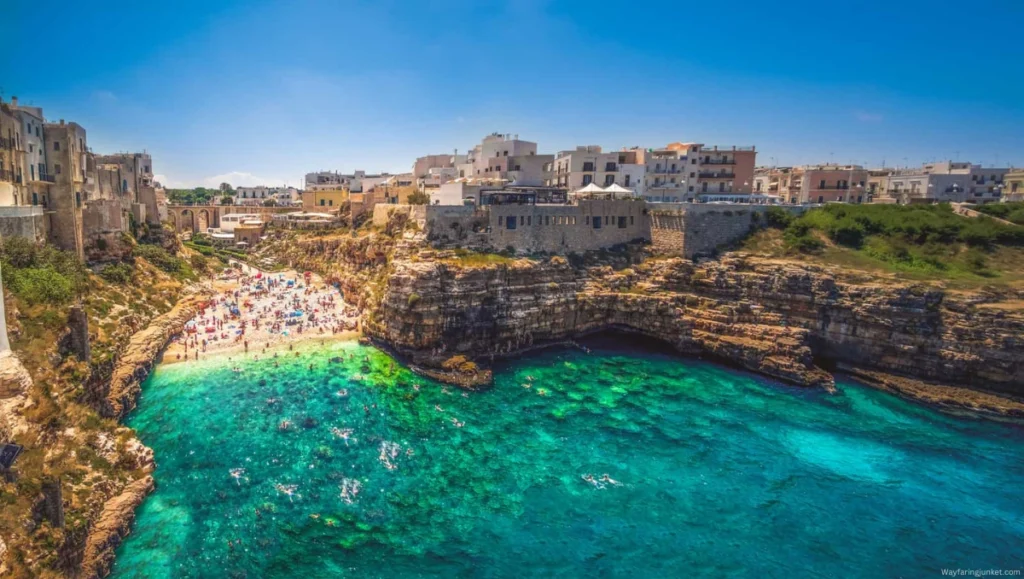


Lecce, often referred to as the “Florence of the South,” is a stunning city in the Puglia region, renowned for its exquisite Baroque architecture and vibrant cultural scene. With its ornate limestone facades, charming piazzas, and winding alleys, Lecce offers visitors a captivating blend of history, art, and Mediterranean charm.
Best Things to Do in Lecce
1. Explore Piazza del Duomo:
Step into the heart of Lecce’s historic center at Piazza del Duomo. Surrounded by stunning Baroque architecture, this enclosed square is home to the magnificent Lecce Cathedral and its striking bell tower. Visit in the evening when the illuminated facades create a magical atmosphere.
2. Admire the Basilica di Santa Croce:
Marvel at the intricate beauty of the Basilica di Santa Croce, one of Italy’s finest examples of Baroque architecture. Its elaborate facade is adorned with mythical creatures, floral motifs, and detailed sculptures. Be sure to explore the interior, where stunning altars and artwork await.
3. Discover the Roman Amphitheater:
Uncover Lecce’s ancient past at the Roman Amphitheater in Piazza Sant’Oronzo. Partially excavated, this impressive structure once held thousands of spectators. Today, it serves as a venue for cultural events and performances, offering visitors a glimpse into the city’s Roman heritage.
4. Explore Artisan Workshops:
Experience Lecce’s rich artisanal tradition by visiting its local workshops. The city is renowned for its papier-mâché craftsmanship, a skill passed down through generations. Watch artisans carefully mold and paint intricate sculptures and decorative pieces, making for a unique and authentic souvenir.
What to Eat in Lecce
Lecce’s cuisine showcases the fresh, vibrant flavors of Puglia. Some must-try dishes include:
- Orecchiette con le Cime di Rapa: Traditional ear-shaped pasta served with turnip greens, a staple of the region.
- Rustico Leccese: A savory pastry filled with mozzarella, tomato, and béchamel sauce, perfect for a quick snack.
- Primitivo or Negroamaro Wine: Pair your meal with a glass of these robust, locally-produced wines for a truly authentic Lecce experience.
6. Turin, Piedmont
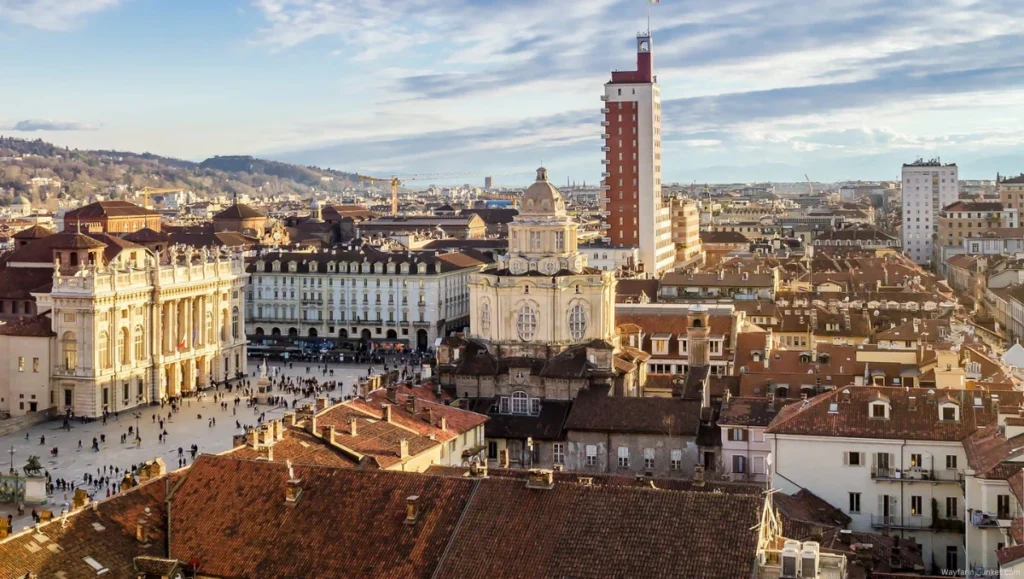
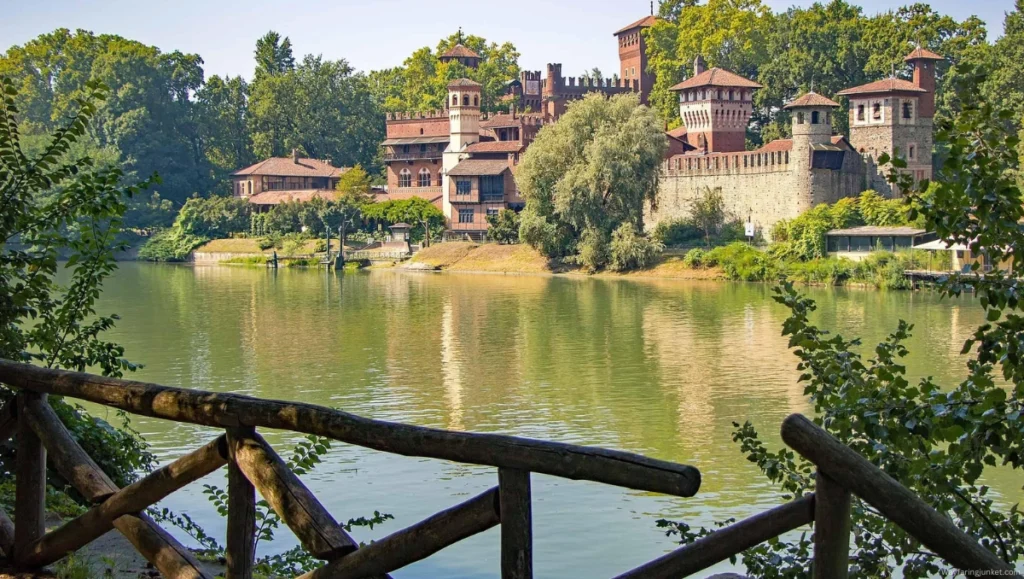
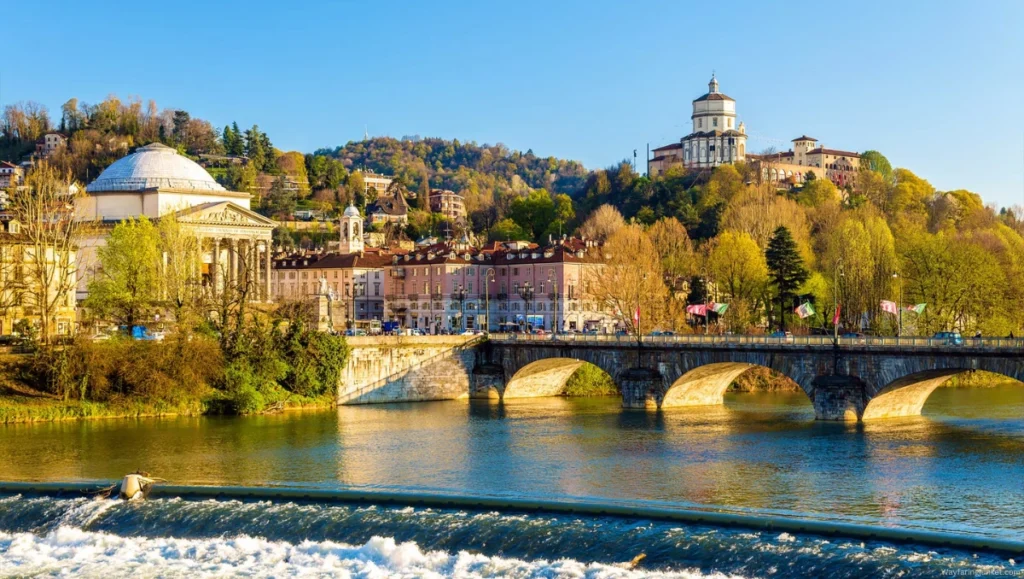
Turin, the elegant capital of Italy’s Piedmont region, is a city of grandeur and sophistication. Known for its baroque architecture, charming piazzas, and refined atmosphere, Turin offers visitors a unique blend of history, culture, and contemporary flair. It’s also the gateway to the stunning Alpine landscapes, making it an excellent destination for both urban exploration and outdoor adventures.
Best Things to Do in Turin
1. Explore Piazza Castello:
Start your adventure in Turin at Piazza Castello, the city’s vibrant main square. Surrounded by historic landmarks like Palazzo Reale and Palazzo Madama, this bustling hub offers a perfect blend of history and culture. Relax at a nearby café and soak in the lively atmosphere.
2. Visit the Museo Egizio:
Step into the past at the Museo Egizio, home to one of the world’s most extensive collections of ancient Egyptian artifacts. With thousands of exhibits, including statues, sarcophagi, and mummies, this museum provides a fascinating insight into Egypt’s rich history.
3. Discover the National Cinema Museum:
Film lovers shouldn’t miss the National Cinema Museum, housed in the iconic Mole Antonelliana. Explore interactive exhibits and cinematic memorabilia, then ride the panoramic glass elevator for sweeping views of Turin and the majestic Alps.
4. Experience Turin’s Automotive Legacy:
Celebrate Turin’s heritage as Italy’s automotive capital at the Museo Nazionale dell’Automobile. Discover vintage cars, futuristic prototypes, and interactive exhibits that showcase the city’s role as the birthplace of Fiat and its influence on the global automotive industry.
5. Luxury Shopping on Via Roma:
Indulge in a premium shopping experience along Via Roma, Turin’s most elegant shopping street. Lined with designer boutiques and stylish arcades, it’s the perfect place for fashion lovers to browse luxury Italian and international brands.
What to Eat in Turin
Turin’s culinary scene is a celebration of Piedmontese flavors, offering rich, hearty dishes and exquisite desserts. From indulgent pasta to iconic chocolate creations, the city is a haven for food lovers.
- Vitello Tonnato: Thinly sliced veal topped with a creamy tuna and caper sauce, a classic appetizer.
- Tajarin al Tartufo: Delicate strands of egg pasta served with a luxurious truffle sauce, perfect for truffle season.
- Bagna Cauda: A warm and savory dip made from garlic, anchovies, olive oil, and butter, traditionally enjoyed with fresh vegetables.
- Gianduja Chocolate: Turin’s signature chocolate, a smooth blend of hazelnuts and cocoa, often found in pralines or spreads.
- Bicerin: A layered indulgence of espresso, rich chocolate, and cream, served in an elegant glass and best enjoyed in a historic café.
7. Milan, Lombardy

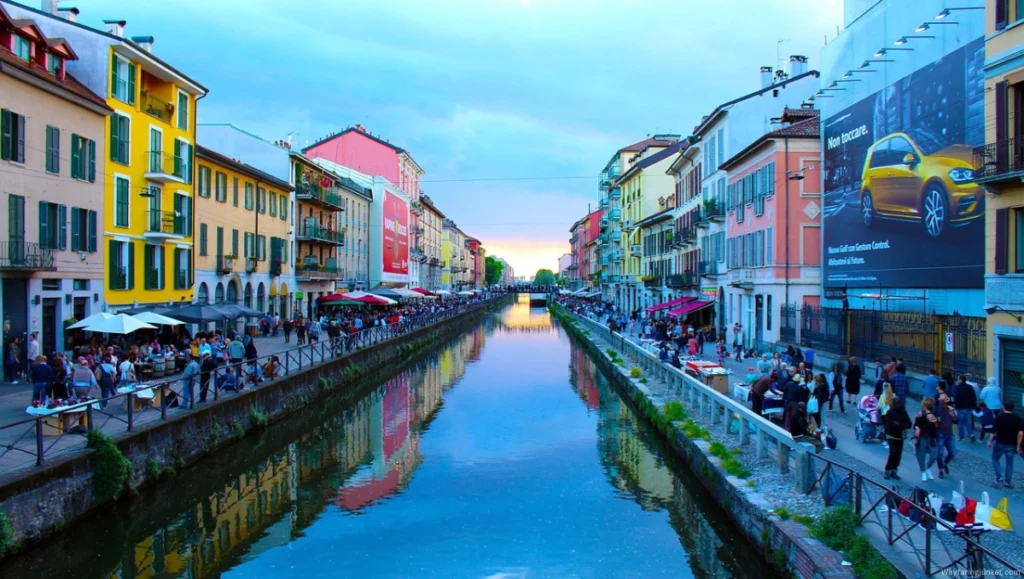
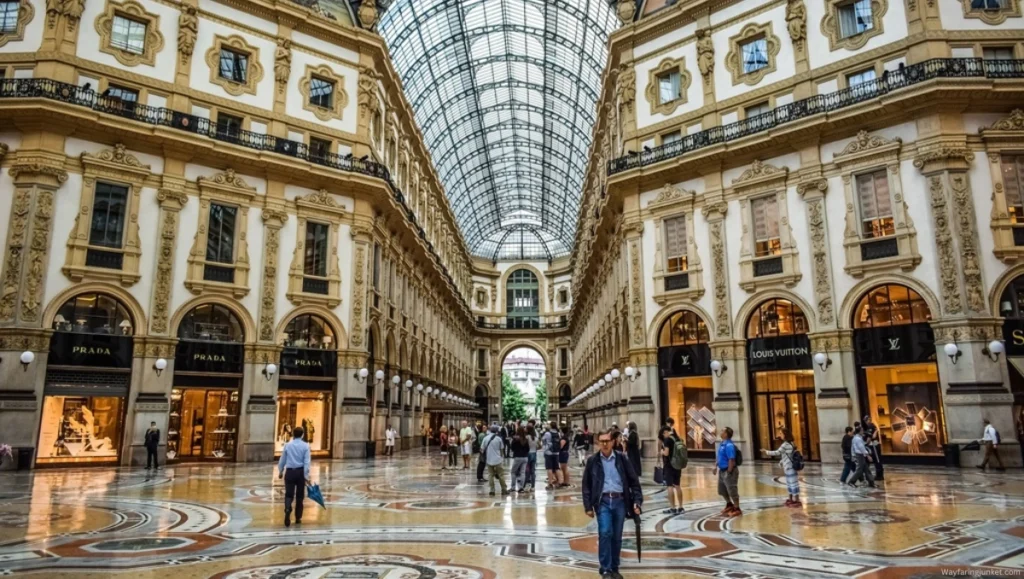
Milan, Italy’s fashion and financial capital, seamlessly blends historic elegance with contemporary sophistication. From world-class shopping and iconic landmarks to vibrant art and nightlife scenes, Milan offers an unforgettable urban experience.
Best Things to Do in Milan
1. Marvel at the Duomo di Milano:
Kick off your Milan adventure at the iconic Duomo di Milano, a stunning example of Gothic architecture. Admire its intricate spires and statues, then head to the rooftop for a panoramic view of the city’s skyline. Don’t forget to explore the cathedral’s impressive interior and underground archaeological area.
2. See Da Vinci’s Masterpiece:
A visit to Santa Maria delle Grazie is a must for art enthusiasts. Here, you can witness Leonardo da Vinci’s world-famous fresco, The Last Supper. Due to its popularity, booking your tickets in advance is highly recommended to ensure your spot.
3. Admire Art at the Pinacoteca di Brera:
The Pinacoteca di Brera is Milan’s premier art gallery, showcasing a vast collection of Italian Renaissance masterpieces. Wander through the elegant halls and admire works by celebrated artists like Raphael, Caravaggio, and Titian.
4. Shop in Style:
Indulge in some luxury shopping at the Galleria Vittorio Emanuele II, one of the world’s oldest shopping galleries. With its glass-domed roof and exquisite architecture, it’s a landmark in its own right. For serious fashion lovers, a trip to the Quadrilatero della Moda (Fashion Quadrilateral) is essential. Discover flagship boutiques from renowned designers like Prada, Versace, and Gucci along Via Montenapoleone and Via della Spiga.
5. Relax with an Aperitivo in Navigli:
After a day of sightseeing, head to the picturesque Navigli district. Its charming canals, designed by Leonardo da Vinci, are lined with bustling bars and restaurants. Enjoy a traditional Milanese aperitivo while watching the sunset and soaking in the vibrant atmosphere.
6. Explore Sforza Castle and La Scala Theatre:
Step into history at Sforza Castle (Castello Sforzesco), a grand fortress housing numerous museums and art collections. From ancient artifacts to Renaissance sculptures, there’s plenty to explore. In the evening, experience the grandeur of La Scala Theatre, one of the world’s most prestigious opera houses. If you’re lucky, catch a live performance for an unforgettable cultural experience.
What to Eat in Milan
Milan’s culinary scene is a delightful mix of tradition and innovation, offering iconic Lombard dishes that reflect the city’s rich heritage. Enjoy elegant meals at renowned restaurants or savor authentic flavors at cozy trattorias.
- Risotto alla Milanese: A creamy, golden risotto infused with saffron, often served as a luxurious main dish or alongside osso buco.
- Cotoletta alla Milanese: A crispy, breaded veal cutlet, fried to perfection and typically served with a wedge of lemon.
- Panettone: This fluffy, fruit-studded sweet bread is a holiday staple, but you’ll find it in specialty bakeries year-round.
- Negroni Sbagliato: A Milanese twist on the classic Negroni, replacing gin with prosecco for a refreshing and bubbly cocktail.
8. Genoa, Liguria
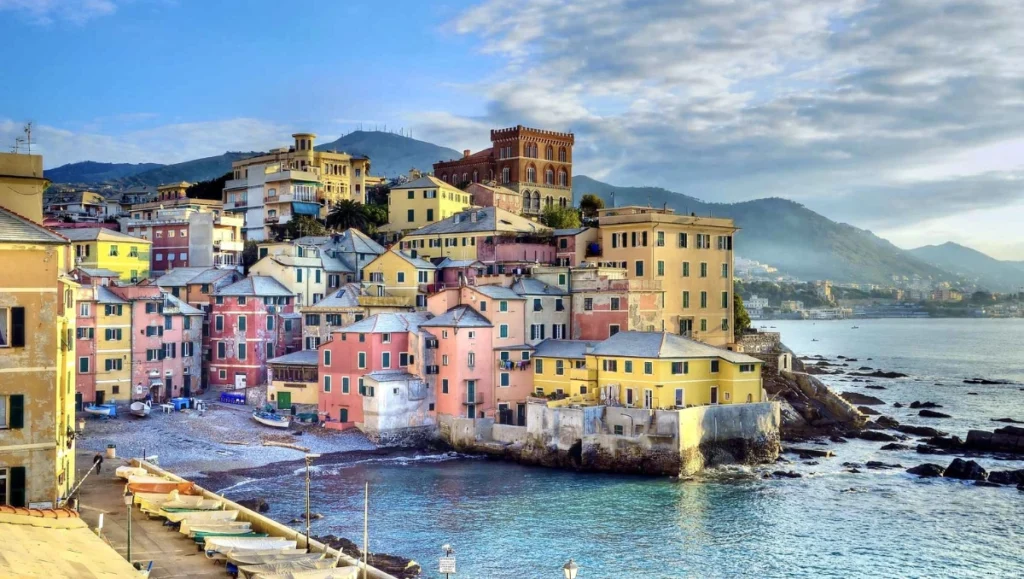

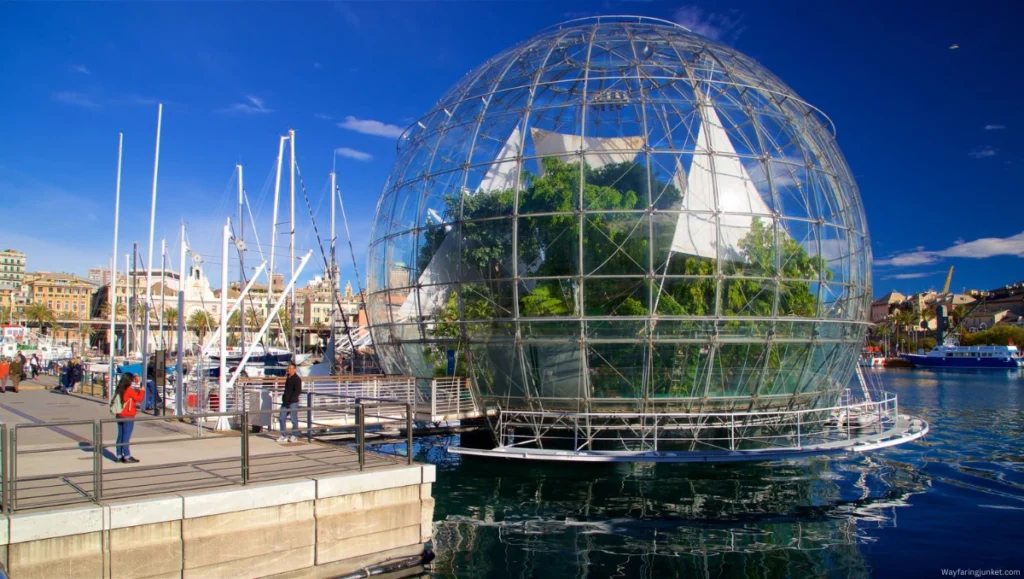
Genoa, a captivating port city, is steeped in maritime history and boasts a blend of old-world charm and modern vibrancy. As the birthplace of Christopher Columbus, it played a significant role in seafaring and trade during the Renaissance. Today, Genoa’s labyrinthine alleys, called caruggi, invite visitors to explore the city’s soul, where medieval architecture mingles with lively local culture.
Best Things to Do in Genoa
1. Explore the Porto Antico:
Start your Genoa adventure at the Porto Antico (Old Port), beautifully revitalized by architect Renzo Piano. This vibrant waterfront is home to the Acquario di Genova, one of Europe’s largest aquariums, where you can marvel at marine life from around the world. Nearby, visit the futuristic Biosfera, a glass sphere housing a tropical ecosystem, and the Galata Maritime Museum to learn about the city’s seafaring heritage.
2. Stroll Along Via Garibaldi:
Take a leisurely walk down Via Garibaldi, a UNESCO World Heritage Site lined with opulent Palazzi dei Rolli. Many of these grand palaces are now museums, including Palazzo Rosso and Palazzo Bianco, which house exceptional art collections. Explore their lavish interiors and admire works by artists like Rubens and Van Dyck.
3. Visit the Cattedrale di San Lorenzo:
A must-see in Genoa is the Cattedrale di San Lorenzo, renowned for its striking black-and-white striped facade. Step inside to explore its majestic interiors, adorned with stunning frescoes and religious artifacts. Don’t miss the underground Treasure Museum, which displays sacred relics, including the Sacro Catino, believed to be the Holy Grail.
4. Take in the View from Spianata Castelletto:
For panoramic views of Genoa, ride the scenic Castelletto Elevator up to Spianata Castelletto. From this elevated terrace, you’ll enjoy breathtaking vistas of the city’s terracotta rooftops and the shimmering Ligurian Sea. It’s a fantastic spot to capture memorable photos or simply take in the serene panorama.
5. Day Trip to Boccadasse:
Escape the bustling city with a short bus ride to Boccadasse, a charming fishing village on the Genoese coast. Wander along its pebble beach, admire the pastel-colored houses, and enjoy fresh seafood at one of the local trattorias. It’s an idyllic place to relax and experience the coastal charm of Liguria.
What to Eat in Genoa
Genoa’s coastal location and rich culinary heritage offer a feast of authentic Ligurian flavors. From aromatic pesto to freshly caught seafood, every bite reflects the city’s maritime charm.
- Pesto alla Genovese: Fresh basil pesto sauce, traditionally served with trofie pasta or trenette.
- Focaccia: Ligurian-style flatbread, golden and crispy, often enjoyed with olive oil and salt or topped with cheese and onions.
- Farinata: A delicious chickpea flour pancake, perfectly crisp on the outside and tender within.
- Seafood: Taste the freshness of the Ligurian Sea with traditional seafood dishes like fritto misto (fried seafood) and branzino al forno (baked sea bass).
9. Naples, Campania
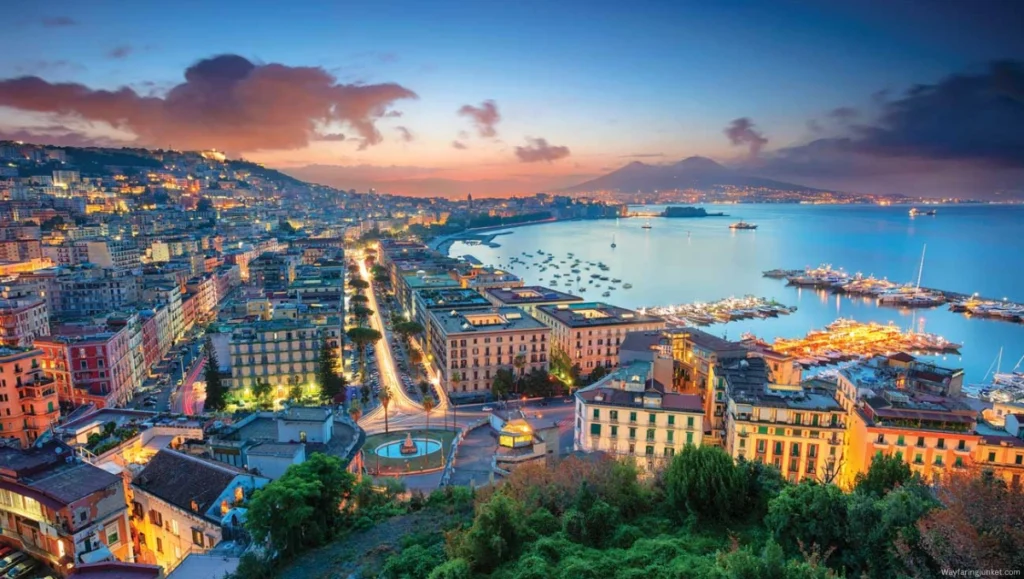
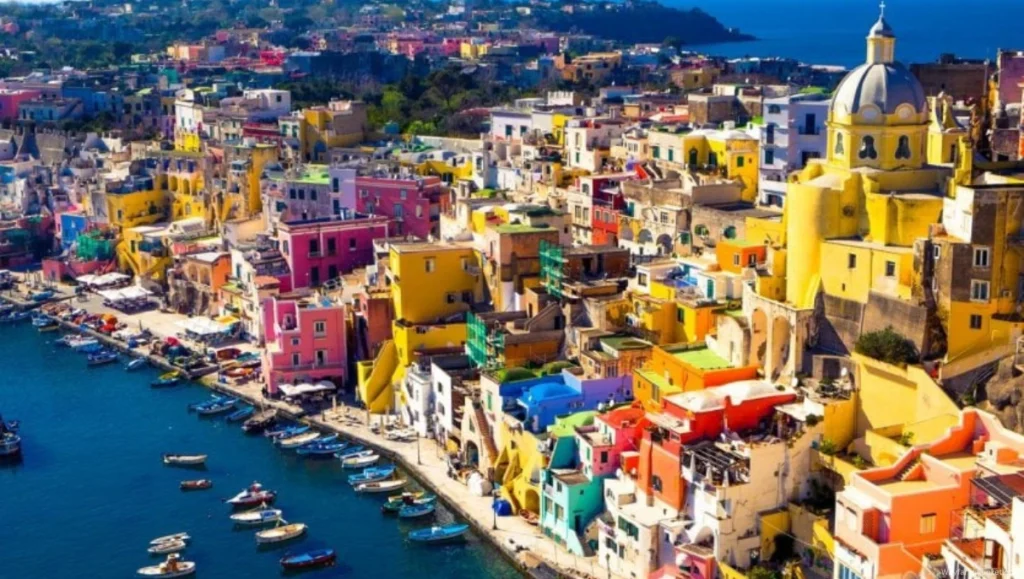
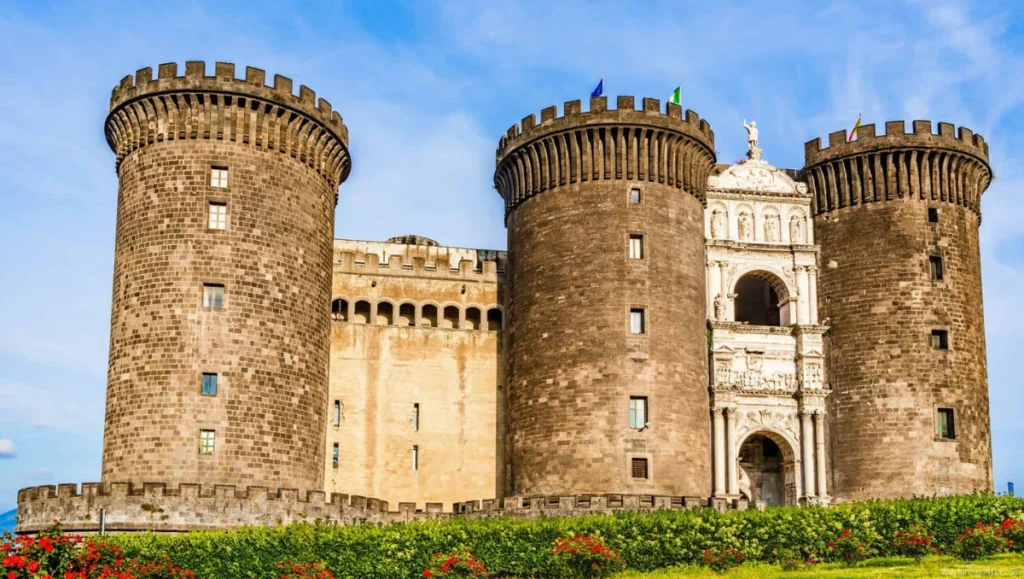
Naples, a city of vibrant energy and historic charm, offers an authentic Italian experience unlike any other. Nestled along the Bay of Naples, it boasts awe-inspiring views of Mount Vesuvius and the Tyrrhenian Sea. The city’s streets are bustling with life, featuring vibrant markets, aromatic pizzerias, and lively piazzas.
Best Things to Do in Naples
1. Visit the Naples National Archaeological Museum:
Start your Naples journey at the Naples National Archaeological Museum, home to one of the world’s most significant collections of Greco-Roman artifacts. Discover ancient mosaics, sculptures, and frescoes from Pompeii and Herculaneum. The museum’s Farnese Collection and Secret Cabinet, featuring Roman erotica, are also must-sees.
2. Explore Naples’ Historic Castles:
History buffs will enjoy exploring Castel dell’Ovo and Castel Nuovo. Perched along the waterfront, Castel dell’Ovo offers panoramic views of the Bay of Naples, while Castel Nuovo impresses with its imposing medieval architecture. Both castles provide fascinating insights into the city’s past.
3. Experience Opera at San Carlo Theatre:
Step into elegance at the San Carlo Theatre, Italy’s oldest opera house and a UNESCO World Heritage Site. Attend a world-class performance or take a guided tour to marvel at its opulent interiors, lavish gold detailing, and magnificent frescoes.
4. Stroll Through Spaccanapoli:
Wander down Spaccanapoli, a narrow street that cuts through Naples’ historic center. This vibrant artery is bustling with life, lined with artisan workshops, traditional eateries, and ancient churches. Stop by Santa Chiara Monastery and admire its beautifully decorated cloister adorned with majolica tiles.
What to Eat in Naples
Naples is the birthplace of pizza and a culinary paradise for food lovers. From authentic street food to indulgent desserts, every bite tells a story of tradition and passion.
- Neapolitan Pizza: Experience the true essence of Naples with a classic Margherita or Marinara, crafted with San Marzano tomatoes, fresh mozzarella, and fragrant basil. Historic pizzerias like L’Antica Pizzeria da Michele serve some of the best.
- Sfogliatella: A crispy, shell-shaped pastry filled with sweet ricotta and flavored with citrus and cinnamon.
- Babà: This rum-soaked sponge cake is a local favorite, often served with whipped cream or fruit.
10. Bologna, Emilia-Romagna
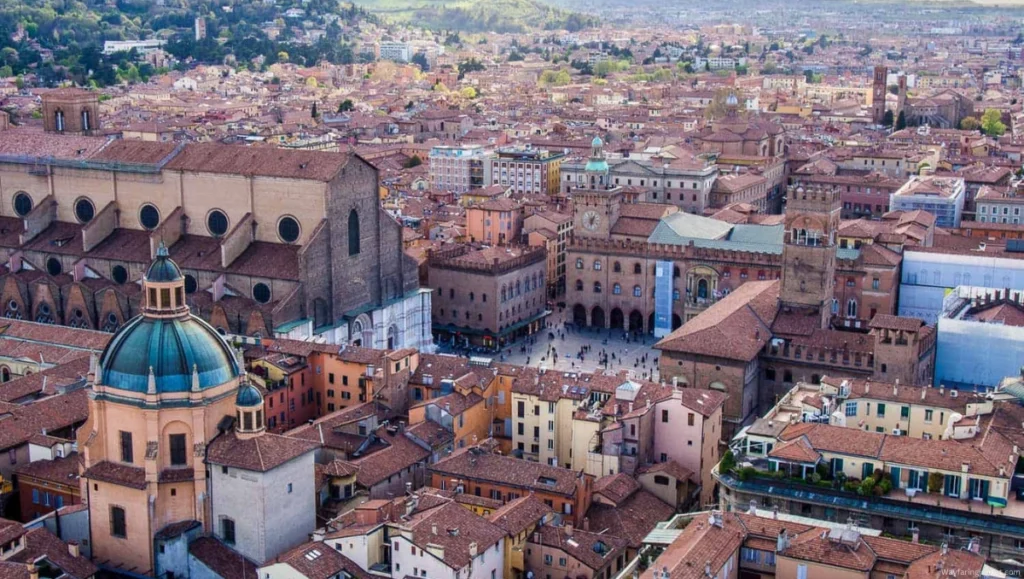
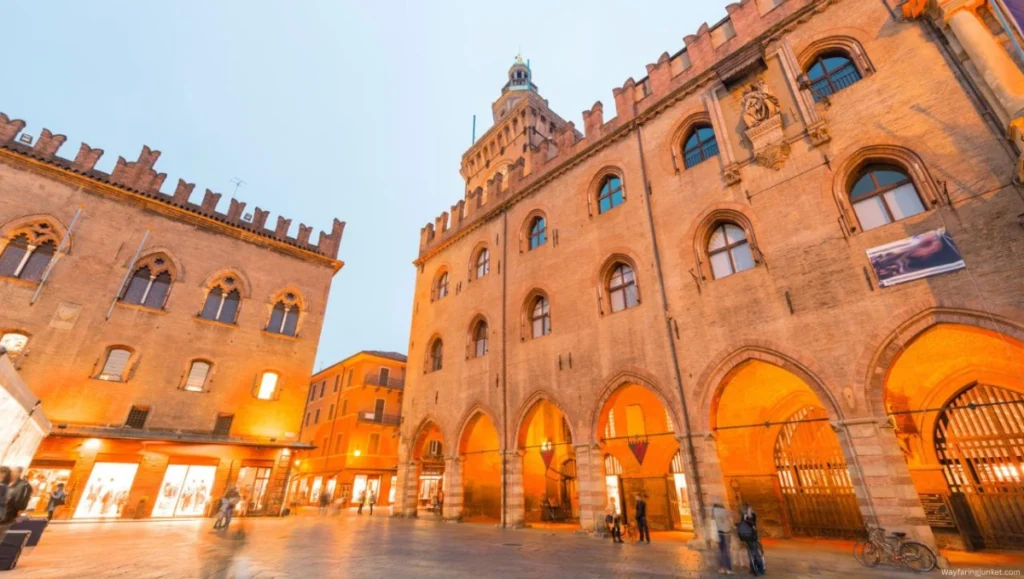
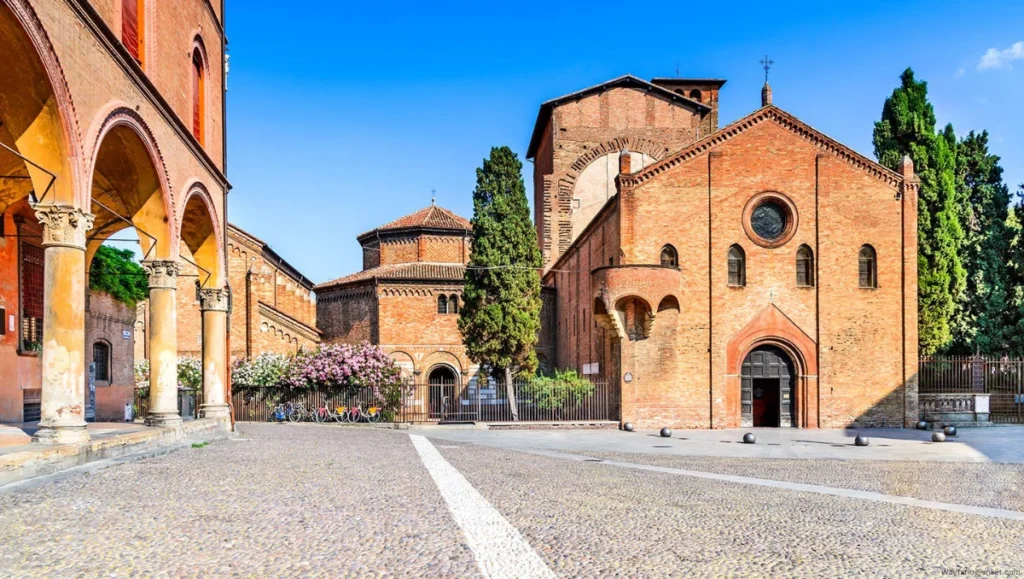
Bologna is a food lover’s paradise, known as the culinary capital of Italy. Home to the iconic tagliatelle al ragù and mortadella, it’s a must-visit for anyone looking to indulge in authentic Italian cuisine. But beyond its gastronomic delights, Bologna boasts a rich history and stunning architecture.
Best Things to Do in Bologna
1. Explore Piazza Maggiore:
Start your Bologna adventure at Piazza Maggiore, the city’s lively main square. Surrounded by architectural gems like the Basilica of San Petronio and Palazzo d’Accursio, this historic plaza is a cultural hub that often hosts concerts, festivals, and events. Enjoy the vibrant atmosphere and admire the beautiful Renaissance and medieval buildings.
2. Climb the Two Towers:
A short walk from Piazza Maggiore leads you to the iconic Two Towers (Le Due Torri) — Asinelli and Garisenda. Brave the 498 steps of the Asinelli Tower for a stunning panoramic view of Bologna’s terracotta rooftops and rolling hills. It’s a challenging climb, but the breathtaking scenery at the top is worth the effort.
3. Walk Under the Porticoes:
Bologna’s famous porticoes stretch over 40 kilometers, offering shade and shelter as you explore the city. One of the most iconic routes is the Portico di San Luca, leading to the Sanctuary of the Madonna di San Luca. This scenic uphill walk rewards visitors with sweeping views and a serene pilgrimage experience.
4. Visit Art and History Museums:
Art lovers shouldn’t miss the Pinacoteca Nazionale di Bologna, where Renaissance masterpieces by artists like Raphael, Titian, and Carracci are on display. For a glimpse into Bologna’s academic heritage, visit the University of Bologna, the oldest university in the Western world. Be sure to explore the Archiginnasio and its remarkable Anatomical Theater, a historic site that once hosted medical lectures and dissections.
5. Discover the Quadrilatero District:
Immerse yourself in local culture at the Quadrilatero District, Bologna’s bustling market area. Wander through narrow lanes filled with food stalls, artisan shops, and traditional delicatessens. Savor regional specialties like mortadella, tortellini, and tagliatelle al ragù while enjoying the authentic Bolognese atmosphere.
What to Eat in Bologna
Bologna is a food lover’s paradise, often hailed as Italy’s culinary capital. Indulge in traditional Emilian cuisine at local trattorias and savor the city’s signature flavors.
- Tagliatelle al Ragù: Authentic Bolognese pasta with a savory meat sauce.
- Tortellini in Brodo: Handmade pasta stuffed with meat, served in a rich broth.
- Mortadella: Bologna’s famous cured pork sausage, often enjoyed in sandwiches or antipasto platters.
- Lambrusco and Pignoletto: Sample the region’s refreshing sparkling wines, perfect for pairing with hearty meals.
11. Ravenna, Emilia-Romagna
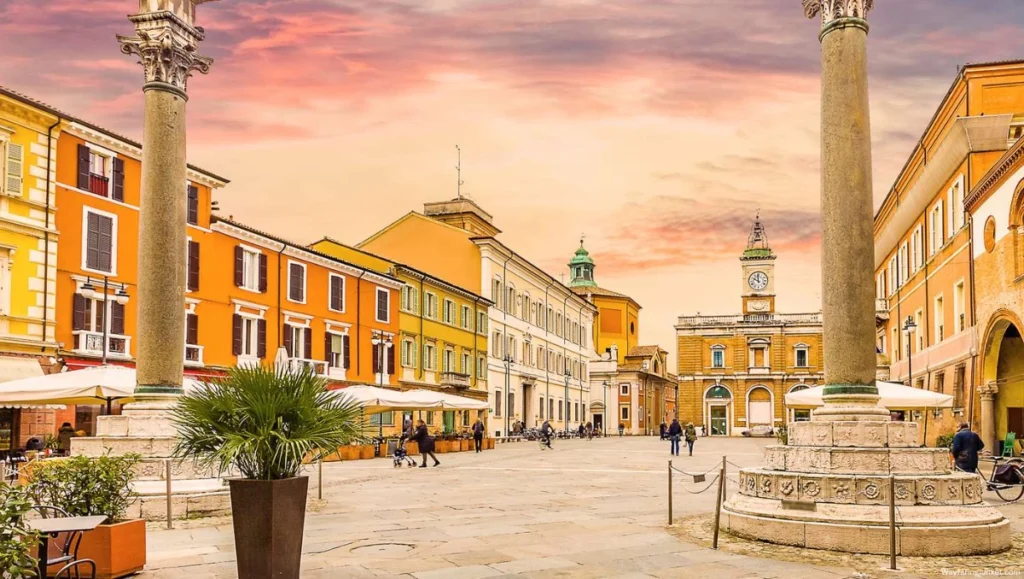
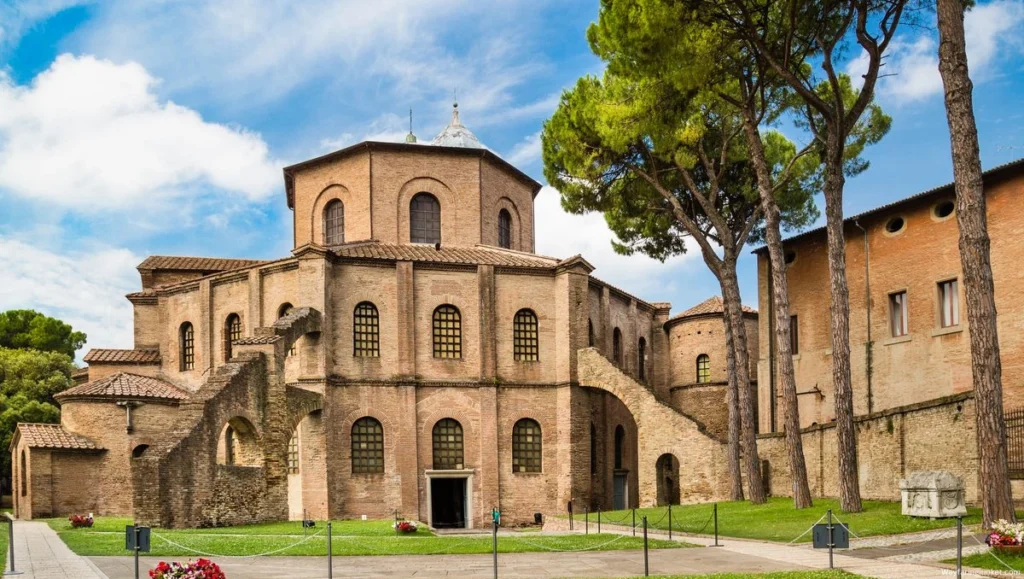
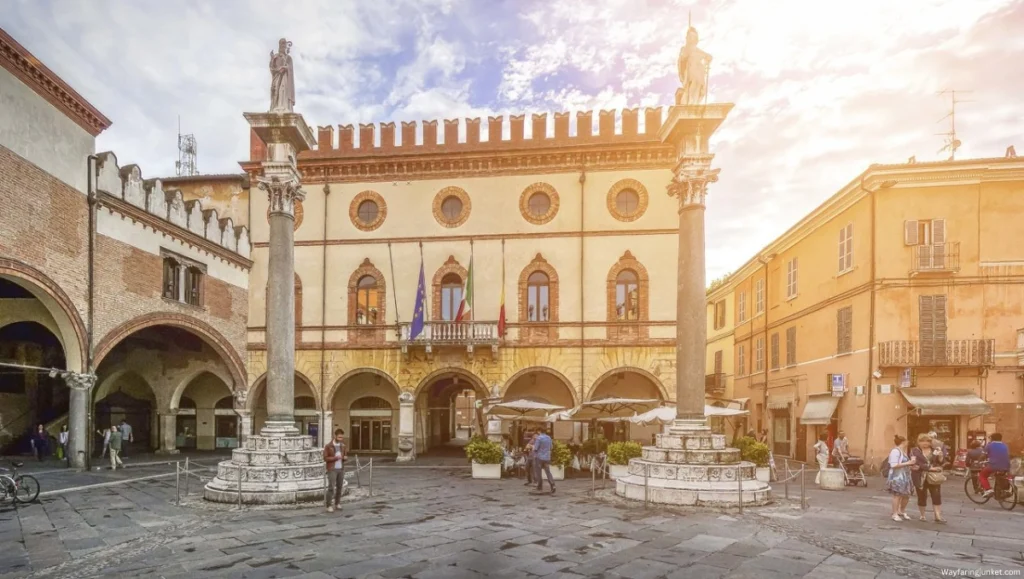
Ravenna is a treasure trove of Byzantine art and ancient mosaics, boasting eight UNESCO World Heritage Sites. The city’s rich history dates back over 1,500 years, and its mosaics are considered some of the most beautiful in the world.
Best Things to Do in Ravenna
1. Admire the Mosaics at Basilica of San Vitale:
Step into the awe-inspiring Basilica of San Vitale, renowned for its magnificent Byzantine mosaics. The golden-hued depictions of biblical scenes, vibrant colors, and intricate designs make it one of the most significant artistic achievements in Western Europe. Take your time to absorb the splendor of this UNESCO World Heritage Site.
2. Visit the Mausoleum of Galla Placidia:
A short stroll from the basilica leads you to the Mausoleum of Galla Placidia, a hidden gem with mosaics that evoke wonder and admiration. Its iconic starry sky ceiling, adorned with countless shimmering stars, has enchanted visitors for centuries and remains one of Ravenna’s most captivating sights.
3. Pay Your Respects at Dante’s Tomb:
Celebrate the legacy of Italy’s literary giant at Dante’s Tomb, the final resting place of the revered poet. Nearby, explore the peaceful Basilica di San Francesco and catch a glimpse of its fascinating submerged crypt, where a mosaic floor can be seen through the clear water.
4. Explore More Mosaic Masterpieces:
Deepen your appreciation of Ravenna’s artistic heritage with visits to the Neonian Baptistery and the Archiepiscopal Chapel. Both sites feature exquisite mosaics that further showcase the city’s artistic prowess. For an extra dose of splendor, venture to the Basilica of Sant’Apollinare in Classe, located just outside Ravenna, and admire its stunning mosaics depicting early Christian iconography.
What to Eat in Ravenna
Ravenna’s cuisine reflects the rich culinary traditions of the Emilia-Romagna region, offering comforting dishes that are both rustic and flavorful. Indulge in authentic local specialties at traditional osterias and trattorias.
- Piadina Romagnola: A beloved flatbread, typically filled with creamy squacquerone cheese, prosciutto, or fresh vegetables.
- Cappelletti: Delicate stuffed pasta, usually filled with cheese or meat and served in a savory broth, often enjoyed during festive occasions.
- Passatelli: A unique pasta made from breadcrumbs, eggs, and Parmesan, commonly served in a rich meat broth for a comforting meal.
12. Rome, Lazio

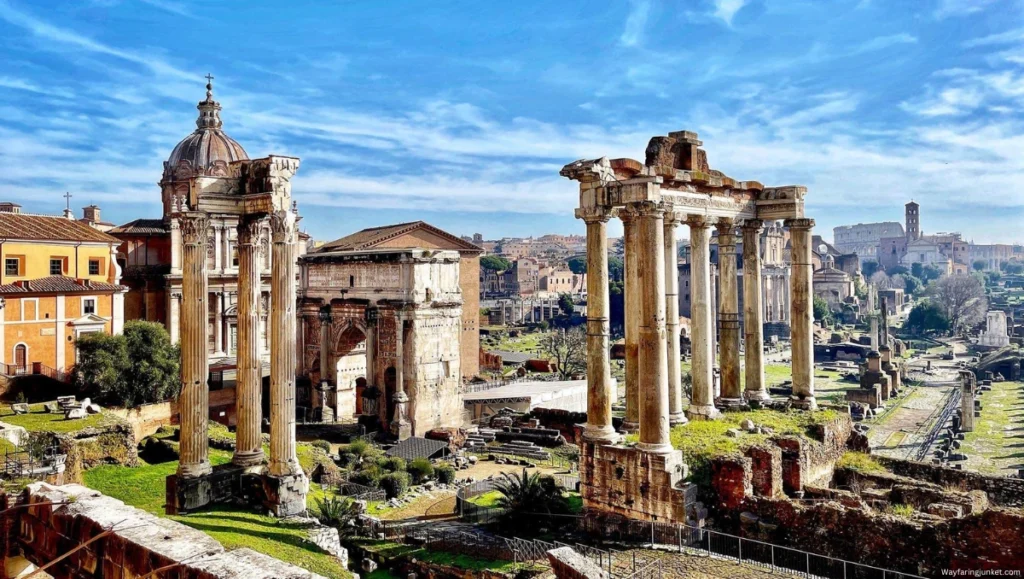
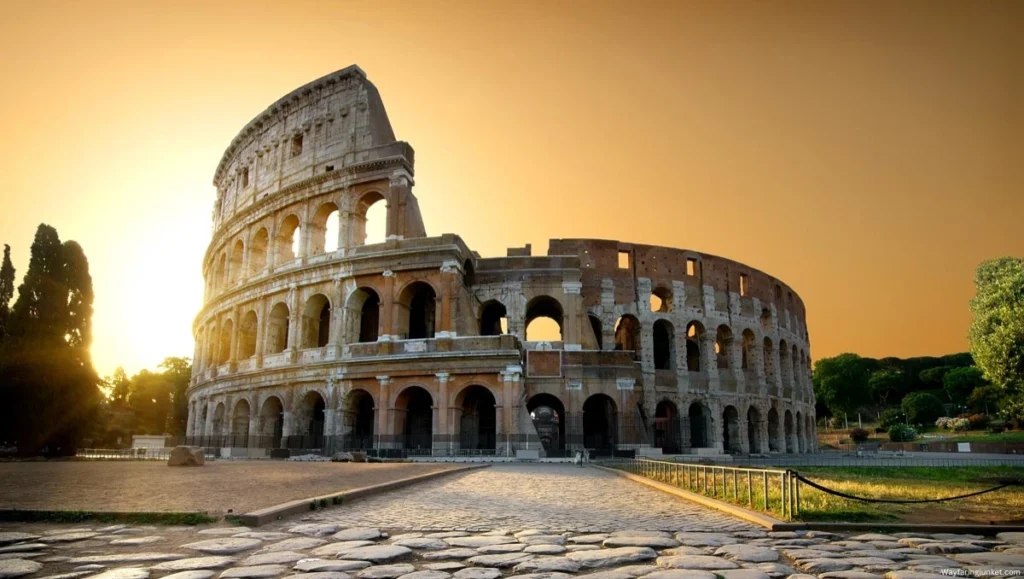
Rome, the Eternal City, is a living museum where ancient ruins coexist with vibrant contemporary culture. A stroll through its cobblestone streets offers glimpses of history at every turn, from the awe-inspiring Colosseum to the grandeur of the Roman Forum.
Best Things to Do in Rome
1. Explore the Colosseum and Roman Forum:
Step back in time at the iconic Colosseum, where gladiators once fought before roaring crowds. Wander through its ancient arches and imagine the spectacles that once took place here. Just a short walk away, explore the vast ruins of the Roman Forum, the heart of ancient Roman political and social life. Stroll along its historic paths and admire remnants of temples, basilicas, and public spaces.
2. Marvel at Vatican City:
Art and history enthusiasts will be captivated by Vatican City, home to St. Peter’s Basilica and the awe-inspiring Sistine Chapel, featuring Michelangelo’s renowned frescoes. Explore the Vatican Museums for an extensive collection of artistic and historical treasures, offering an unparalleled cultural experience.
3. Enjoy Luxury Shopping on Via Condotti:
For a luxurious shopping experience, take a leisurely stroll along Via Condotti, Rome’s most prestigious shopping street. Discover flagship boutiques from renowned designers like Gucci, Prada, and Bulgari, and immerse yourself in the world of Italian fashion and craftsmanship.
4. Relax at Piazza Navona:
Unwind in the elegant surroundings of Piazza Navona, one of Rome’s most beautiful squares. Admire Bernini’s Fountain of the Four Rivers, a masterpiece of Baroque sculpture. The square is bustling with street artists, performers, and charming cafes, making it the perfect spot to soak in the lively Roman atmosphere.
5. Make a Wish at the Trevi Fountain:
No trip to Rome is complete without a visit to the Trevi Fountain. Toss a coin over your left shoulder to ensure your return to the Eternal City, as tradition suggests. Marvel at the fountain’s grand design, featuring Neptune and a dramatic display of cascading water.
6. Discover Trastevere:
Experience authentic Roman culture in the charming neighborhood of Trastevere. Wander through its cobblestone streets, lined with ivy-clad buildings, artisan shops, and traditional trattorias. In the evening, enjoy a vibrant nightlife scene or savor authentic Roman cuisine at one of the district’s many restaurants.
7. Find Serenity at Villa Borghese:
Escape the city’s hustle and bustle at the serene Villa Borghese park. Rent a bike, enjoy a leisurely boat ride on the lake, or simply stroll through its lush greenery. Art lovers can visit the Borghese Gallery to admire masterpieces by Caravaggio, Bernini, and Raphael.
What to Eat in Rome
Rome’s culinary scene is a delightful blend of timeless flavors and comforting dishes, reflecting the city’s rich heritage. From classic pasta recipes to indulgent desserts, savor the authentic tastes of the Eternal City at traditional trattorias and local eateries.
- Cacio e Pepe: A simple yet delicious pasta dish made with pecorino cheese and black pepper, showcasing the essence of Roman cuisine.
- Carbonara: Creamy pasta prepared with eggs, Pecorino Romano cheese, pancetta, and black pepper for a rich and satisfying meal.
- Supplì: Crispy fried rice balls stuffed with mozzarella, often served as a popular street food or appetizer.
- Tiramisù: End your meal with this iconic Italian dessert, featuring layers of coffee-soaked ladyfingers and mascarpone cream.
Correlated Article:
13. Tropea, Calabria
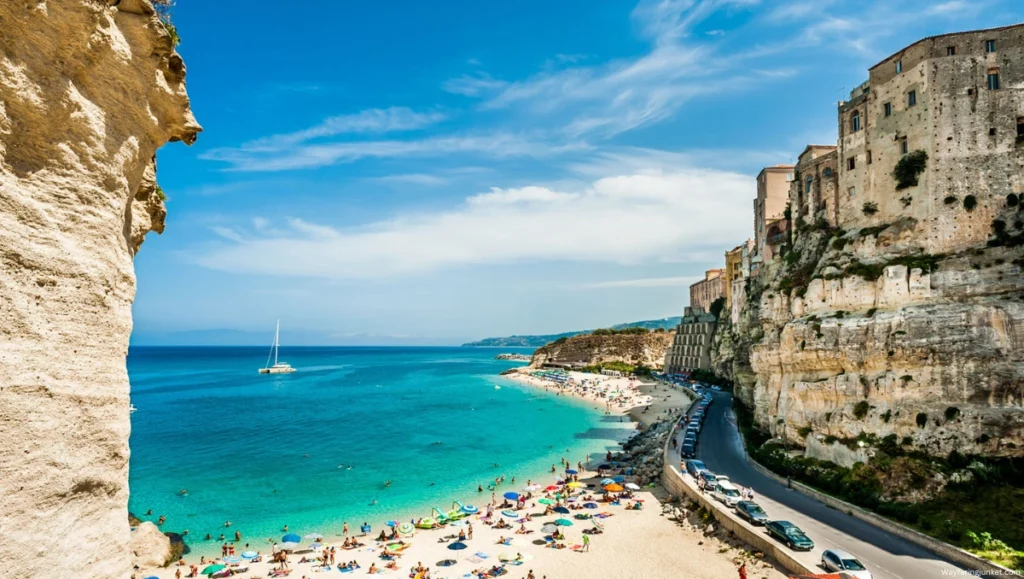
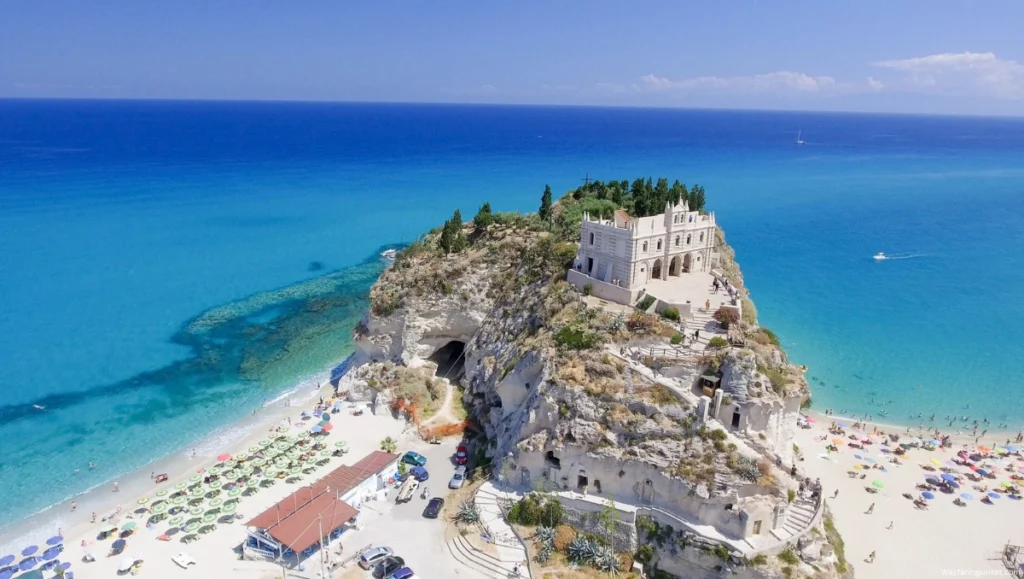
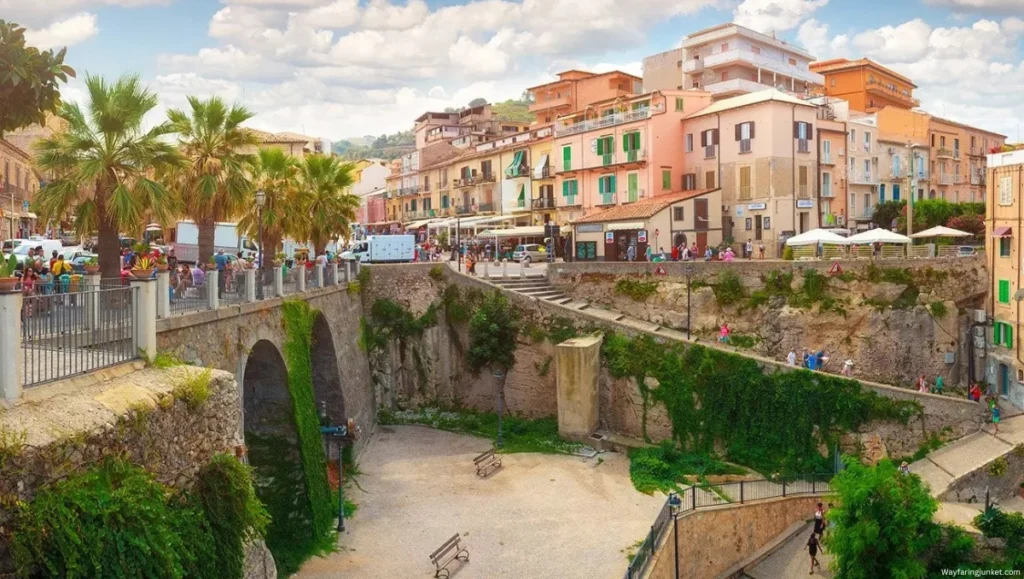
Tropea, often referred to as the “Jewel of Calabria”, is a picturesque coastal town perched on dramatic cliffs overlooking the turquoise waters of the Tyrrhenian Sea. Famous for its pristine beaches and captivating views, Tropea offers visitors a perfect blend of relaxation, history, and authentic Southern Italian culture.
Best Things to Do in Tropea
1. Visit the Sanctuary of Santa Maria dell’Isola:
Discover Tropea’s most iconic landmark, the Sanctuary of Santa Maria dell’Isola, a striking medieval church perched on a rocky promontory overlooking the Tyrrhenian Sea. This picturesque site offers breathtaking panoramic views of the coastline, making it a perfect spot for capturing memorable photos. Visiting at sunset adds a magical touch to the experience.
2. Explore the Historic Center:
Take a leisurely stroll through Tropea’s enchanting historic center, where cobblestone streets weave past colorful buildings and charming piazzas. Discover hidden gems like local artisan shops, family-owned trattorias, and traditional gelaterias. The relaxed Mediterranean atmosphere invites you to explore at your own pace and soak in the town’s authentic charm.
3. Relax at the Costa degli Dei Beaches:
Tropea is renowned for its stunning coastline, known as the Costa degli Dei or “Coast of the Gods.” Spend a day basking in the sun at Spiaggia di Tropea, a pristine beach with soft white sands and crystal-clear turquoise waters. Whether you prefer swimming, snorkeling, or simply relaxing with a view of the rugged cliffs, these idyllic beaches offer a perfect seaside escape.
What to Eat in Tropea
Calabrian cuisine is a vibrant celebration of bold flavors and fresh ingredients, offering a delightful culinary experience. While visiting Tropea, be sure to savor these regional specialties:
- Nduja: A spicy, spreadable pork sausage infused with Calabrian chili, perfect on bread or mixed into pasta sauces for a fiery kick.
- Fileja: Traditional hand-rolled pasta, often served with a hearty tomato sauce and sprinkled with Pecorino cheese.
- Tartufo di Pizzo: An indulgent chocolate and hazelnut ice cream dessert, originating from the nearby town of Pizzo — a must-try for sweet lovers.
- Seafood Specialties: Freshly caught swordfish, tuna, or crispy fried calamari are best enjoyed at seaside restaurants, showcasing the region’s maritime heritage.
- Cirò Wine: This robust Calabrian red wine pairs beautifully with the bold, spicy flavors of local cuisine.
14. Florence, Tuscany
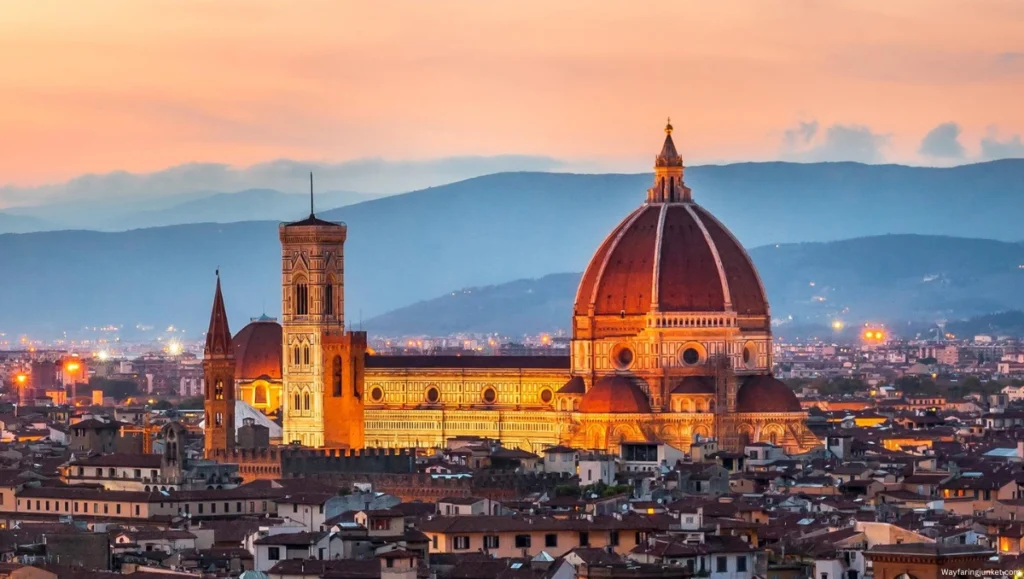
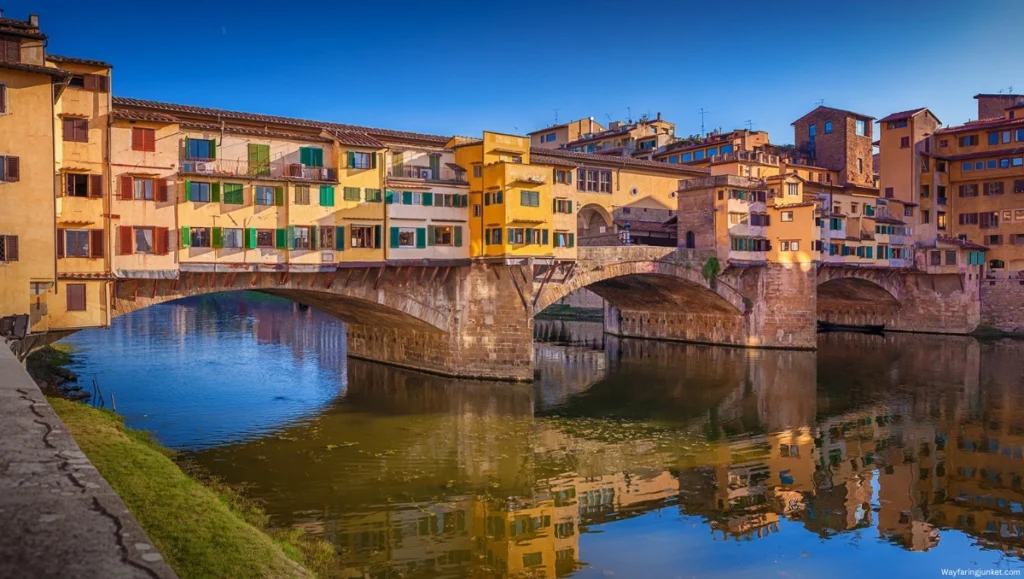
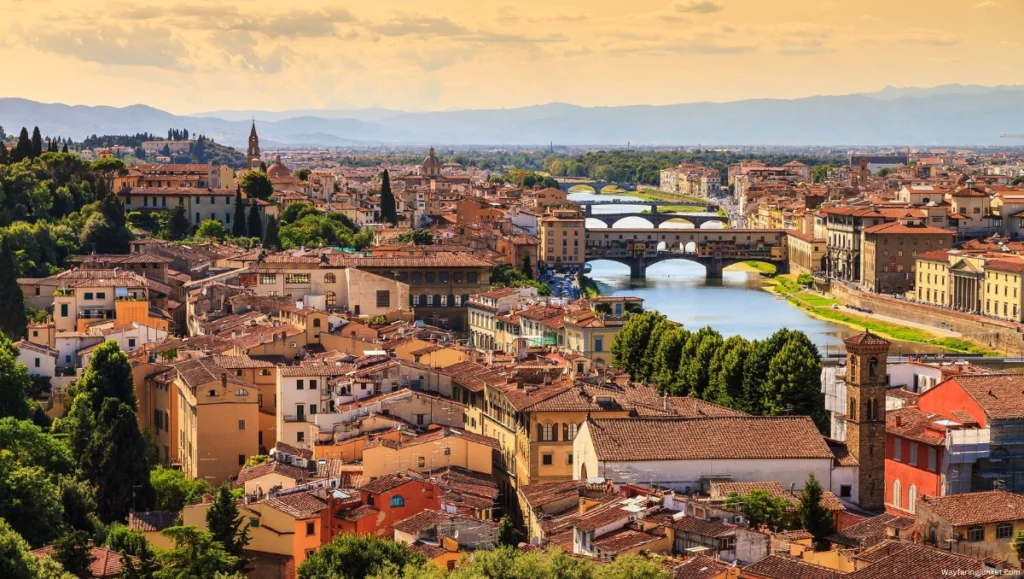
Florence, the cradle of the Renaissance, is a city of unrivaled beauty, brimming with art, history, and culture. With its grand palaces, iconic cathedrals, and world-renowned museums, Florence offers an immersive experience for lovers of history and art alike.
Best Things to Do in Florence
1. Explore Piazza San Marco:
Begin your Venetian adventure at the iconic Piazza San Marco, the vibrant heart of the city. Admire the magnificent St. Mark’s Basilica with its dazzling mosaics and opulent domes. Next, visit the elegant Doge’s Palace, a masterpiece of Venetian Gothic architecture. For a stunning view, ascend the Campanile (bell tower) to enjoy panoramic vistas of the city and the shimmering lagoon.
2. Take a Gondola Ride on the Grand Canal:
Experience Venice’s charm from the water with a classic gondola ride along the Grand Canal. Glide past centuries-old palaces and picturesque bridges, taking in the city’s romantic atmosphere. For a more budget-friendly option, board a vaporetto (water bus) to traverse the canal while enjoying scenic views.
3. Visit the Islands of Murano and Burano:
Escape the crowds and explore the enchanting islands near Venice:
Murano: Renowned for its exceptional glassmaking heritage. Watch skilled artisans craft delicate glass creations in traditional workshops and browse exquisite glass art in local boutiques.
Burano: Famous for its vibrant, colorful houses and centuries-old lace-making tradition. Stroll along its canals, enjoy a leisurely meal, and capture picture-perfect moments.
4. Indulge in Venetian Art:
Art lovers will find Venice a treasure trove of masterpieces. Visit the Peggy Guggenheim Collection to explore a world-class selection of modern art, featuring works by Picasso, Pollock, and Dalí. For a deeper appreciation of Venetian Renaissance art, head to the Gallerie dell’Accademia, where masterpieces by Bellini, Titian, and Veronese await.
What to Eat in Florence
Food is at the heart of the Florence experience, offering a delicious gateway into Tuscan cuisine. Indulge in these traditional specialties:
- Bistecca alla Fiorentina: A thick, char-grilled T-bone steak cooked rare, showcasing the bold flavors of Tuscan beef.
- Ribollita: A hearty vegetable and bread soup, traditionally prepared with kale, beans, and olive oil — a true comfort dish.
- Pappa al Pomodoro: A rich and satisfying tomato and bread soup, infused with garlic, basil, and extra virgin olive oil.
Pair your meal with a glass of Chianti wine for the perfect Tuscan dining experience.
15. Venice, Veneto

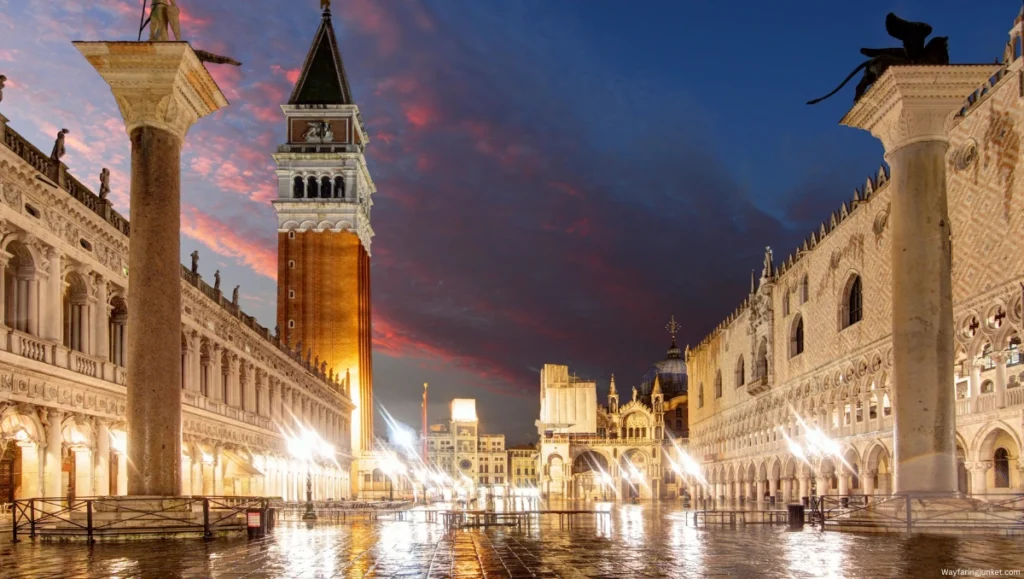

Venice, often referred to as the “Floating City”, is one of the most enchanting destinations in the world. Built on a network of canals, it offers a truly magical experience with its historic palaces, winding waterways, and iconic gondolas. The city’s romantic charm makes it a top choice for couples, honeymooners, and cultural enthusiasts.
Best Things to Do in Venice
1. Explore Piazza San Marco:
Begin your Venetian adventure at the iconic Piazza San Marco, the vibrant heart of the city. Admire the magnificent St. Mark’s Basilica with its dazzling mosaics and opulent domes. Next, visit the elegant Doge’s Palace, a masterpiece of Venetian Gothic architecture. For a stunning view, ascend the Campanile (bell tower) to enjoy panoramic vistas of the city and the shimmering lagoon.
2. Take a Gondola Ride on the Grand Canal:
Experience Venice’s charm from the water with a classic gondola ride along the Grand Canal. Glide past centuries-old palaces and picturesque bridges, taking in the city’s romantic atmosphere. For a more budget-friendly option, board a vaporetto (water bus) to traverse the canal while enjoying scenic views.
3. Visit the Islands of Murano and Burano:
Escape the crowds and explore the enchanting islands near Venice:
Murano: Renowned for its exceptional glassmaking heritage. Watch skilled artisans craft delicate glass creations in traditional workshops and browse exquisite glass art in local boutiques.
Burano: Famous for its vibrant, colorful houses and centuries-old lace-making tradition. Stroll along its canals, enjoy a leisurely meal, and capture picture-perfect moments.
4. Indulge in Venetian Art:
Art lovers will find Venice a treasure trove of masterpieces. Visit the Peggy Guggenheim Collection to explore a world-class selection of modern art, featuring works by Picasso, Pollock, and Dalí. For a deeper appreciation of Venetian Renaissance art, head to the Gallerie dell’Accademia, where masterpieces by Bellini, Titian, and Veronese await.
What to Eat in Venice
Venetian cuisine offers a delightful blend of fresh seafood, rich flavors, and traditional recipes. Savor these local specialties at a waterside trattoria for an authentic experience:
- Sarde in Saor: Sweet and sour sardines, marinated with onions, vinegar, raisins, and pine nuts — a true Venetian classic.
- Risotto al Nero di Seppia: A strikingly black squid ink risotto, known for its creamy texture and briny flavor.
- Tiramisù: Originating in the Veneto region, this iconic dessert layers coffee-soaked ladyfingers with velvety mascarpone cream.
Complete your meal with a glass of Prosecco or a refreshing Venetian spritz, the perfect pairing for the city’s elegant cuisine.
16. Catania, Sicily
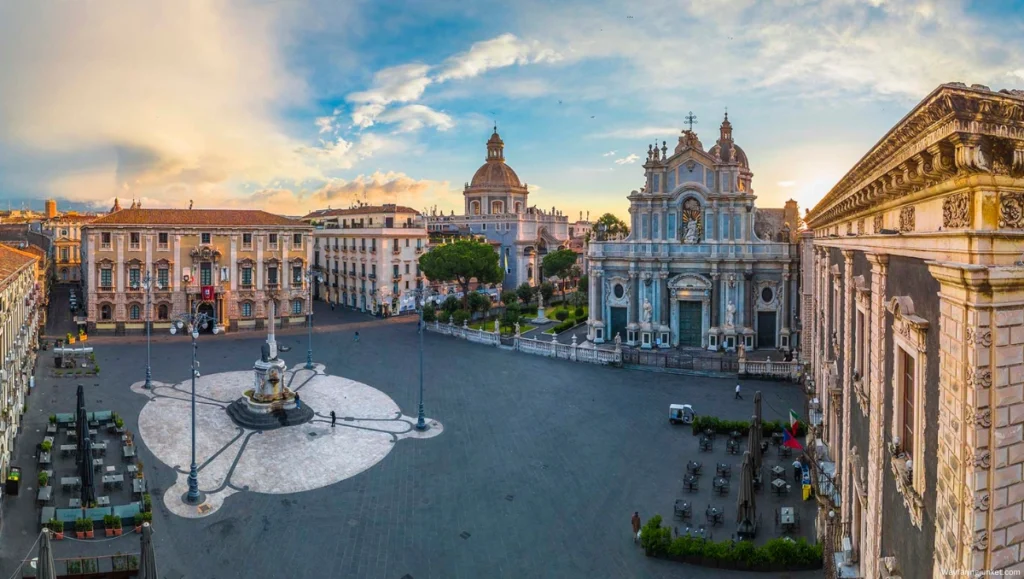
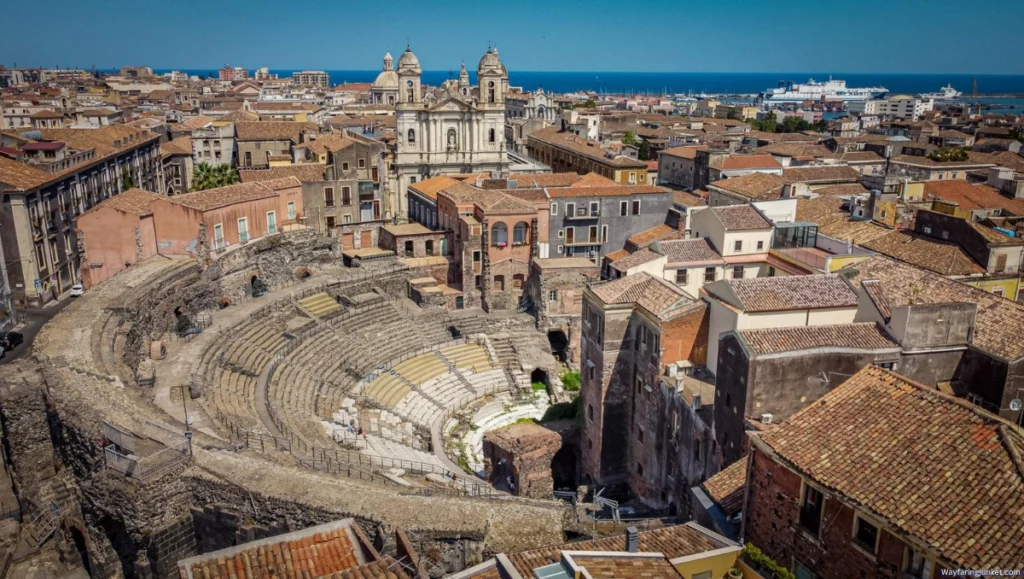

Catania, located on the eastern coast of Sicily, is a vibrant city with a fascinating blend of ancient history and modern culture. Nestled at the foot of Mount Etna, Europe’s highest and most active volcano, Catania offers visitors breathtaking views, rich heritage, and an unmistakable Sicilian charm.
Best Things to Do in Catania
1. Explore Piazza del Duomo:
Begin your Catania adventure at the lively Piazza del Duomo, the city’s main square. Admire the magnificent Catania Cathedral, dedicated to Saint Agatha. Don’t miss the Fontana dell’Elefante, an iconic lava-stone fountain symbolizing the city’s resilience. The square’s vibrant atmosphere and striking architecture offer a perfect introduction to Catania.
2. Discover Ancient History:
Uncover the city’s past at the Roman Amphitheater of Catania, a fascinating archaeological site reflecting the grandeur of ancient Roman entertainment. Continue your historical exploration at Ursino Castle, a formidable 13th-century fortress built by Emperor Frederick II. Now home to the Civic Museum, the castle showcases artifacts and art that narrate Catania’s rich history.
3. Stroll Along Via Etnea:
Take a leisurely walk down Via Etnea, Catania’s bustling main street. Lined with elegant Baroque buildings, boutique shops, and inviting cafes, the street offers an authentic taste of city life. On clear days, enjoy breathtaking views of Mount Etna towering in the background, providing a stunning natural contrast to the vibrant urban scenery.
4. Experience Mount Etna:
No visit to Catania is complete without experiencing the awe-inspiring Mount Etna, one of Europe’s most active volcanoes. Choose from a variety of activities including guided tours, cable car rides, or invigorating hikes to explore its dramatic landscapes. After your adventure, treat yourself to a tasting of the region’s celebrated volcanic wines, known for their distinct flavor, shaped by the fertile volcan
What to Eat in Catania
Catania’s cuisine is a delightful expression of Sicilian flavors, combining fresh local ingredients with bold Mediterranean tastes. Be sure to try these iconic dishes:
- Pasta alla Norma: A beloved Catanese specialty made with sautéed eggplant, tomato sauce, and a generous topping of ricotta salata.
- Arancini: Golden, crispy rice balls filled with meat, cheese, or vegetables — a Sicilian street food staple.
- Cannoli: Crunchy pastry shells filled with sweet ricotta cream, often accented with pistachios or candied fruit.
- Granita with Brioche: A refreshing, semi-frozen dessert served with a soft, sweet brioche roll, traditionally enjoyed for breakfast.
Pair your meal with a glass of Etna Rosso, a volcanic red wine that perfectly complements the region’s robust flavors.
17. Merano, Trentino-Alto Adige
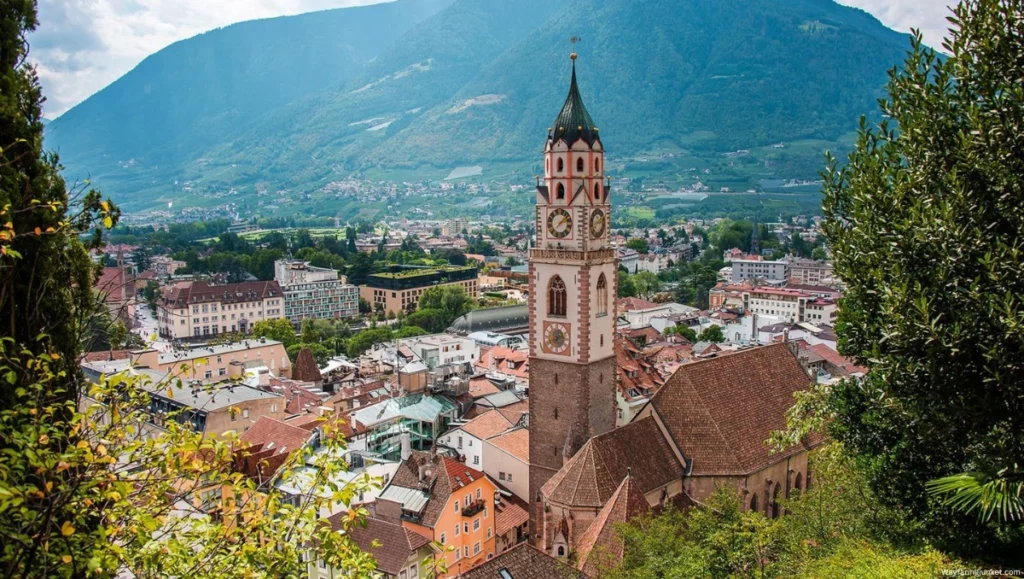
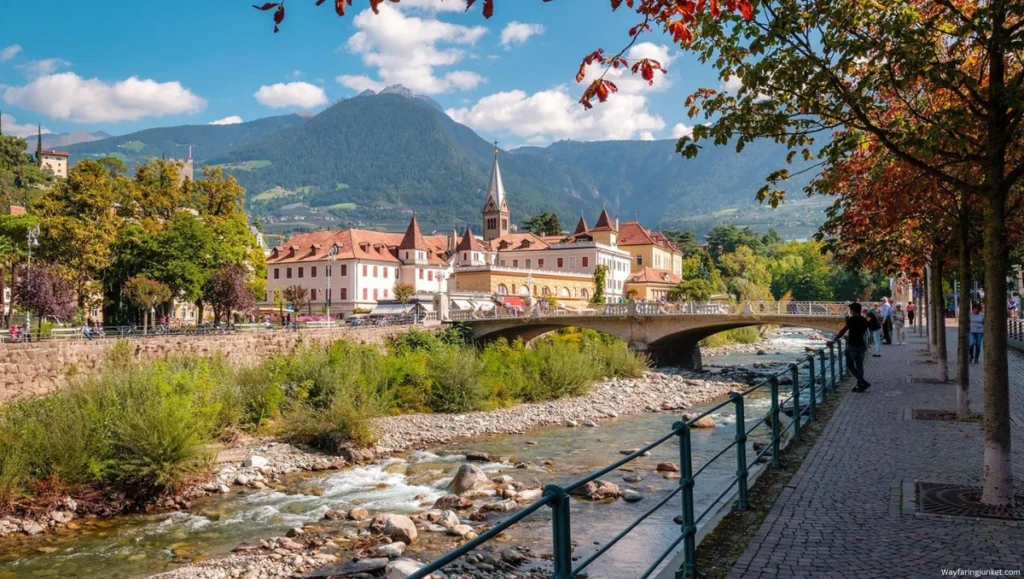

Nestled in the picturesque Italian Alps, Merano is a charming spa town known for its elegant Belle Époque architecture, scenic mountain views, and therapeutic thermal baths. Located in the Trentino-Alto Adige region, it offers a delightful blend of Italian and Austrian influences, reflected in both its culture and cuisine.
Best Things to Do in Merano
1. Take a Scenic Stroll Along Passeggiata Tappeiner:
Enjoy a leisurely walk along the Passeggiata Tappeiner, a stunning promenade offering panoramic views of Merano, the surrounding mountains, and verdant vineyards. The pathway is adorned with Mediterranean vegetation, making it an idyllic spot for a relaxing afternoon. Benches and shaded areas invite visitors to pause and savor the picturesque landscape.
2. Visit the Kurhaus:
Discover the elegance of the Kurhaus, a splendid Art Nouveau building that serves as Merano’s cultural centerpiece. Throughout the year, it hosts concerts, exhibitions, and events, adding a touch of artistic flair to your visit. Its architectural beauty and historical significance make it a must-see landmark.
3. Relax at Terme Merano:
Indulge in ultimate relaxation at Terme Merano, a luxurious spa complex renowned for its therapeutic thermal waters. Featuring a range of indoor and outdoor pools, saunas, and wellness treatments, the spa offers a rejuvenating experience surrounded by breathtaking Alpine views.
4. Explore Trauttmansdorff Castle Gardens:
Nature lovers will be enchanted by the Trauttmansdorff Castle Gardens, a botanical paradise showcasing exotic plants from around the world. With over 80 garden landscapes and themed sections, the gardens offer endless opportunities for exploration. The panoramic views of the mountains and castle further enhance the experience, making it a highlight of any Merano visit.
Winter Activities and Seasonal Events
In winter, Merano transforms into a snowy wonderland, with nearby ski resorts offering excellent slopes and winter sports activities. During the holiday season, the Merano Christmas Market is a magical experience, featuring traditional crafts, local delicacies, and steaming mugs of mulled wine.
What to Eat in Merano
Merano’s culinary scene offers a delicious fusion of Alpine heartiness and Mediterranean elegance. Savor these local specialties:
- Canederli: Hearty bread dumplings, often served in a rich broth or topped with butter and Parmesan.
- Speck: A prized South Tyrolean smoked ham, expertly cured and enjoyed with fresh bread or cheese.
- Strudel: Flaky pastry filled with spiced apples, raisins, and cinnamon — a classic dessert in the region.
- Lagrein or Gewürztraminer Wine: Sip on these exceptional regional wines, known for their robust flavors and aromatic notes, perfectly paired with traditional dishes.
18. Parma, Emilia-Romagna
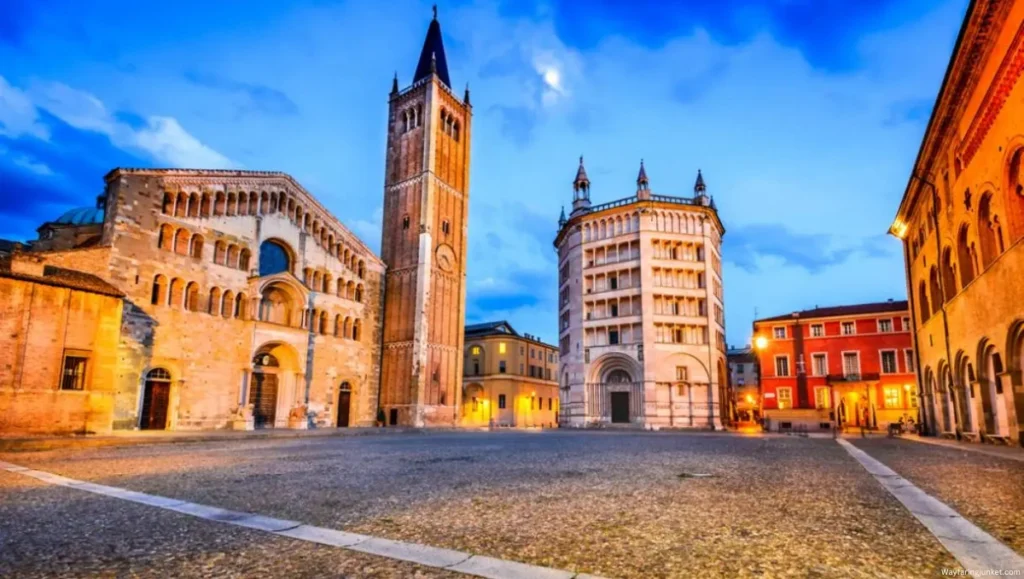
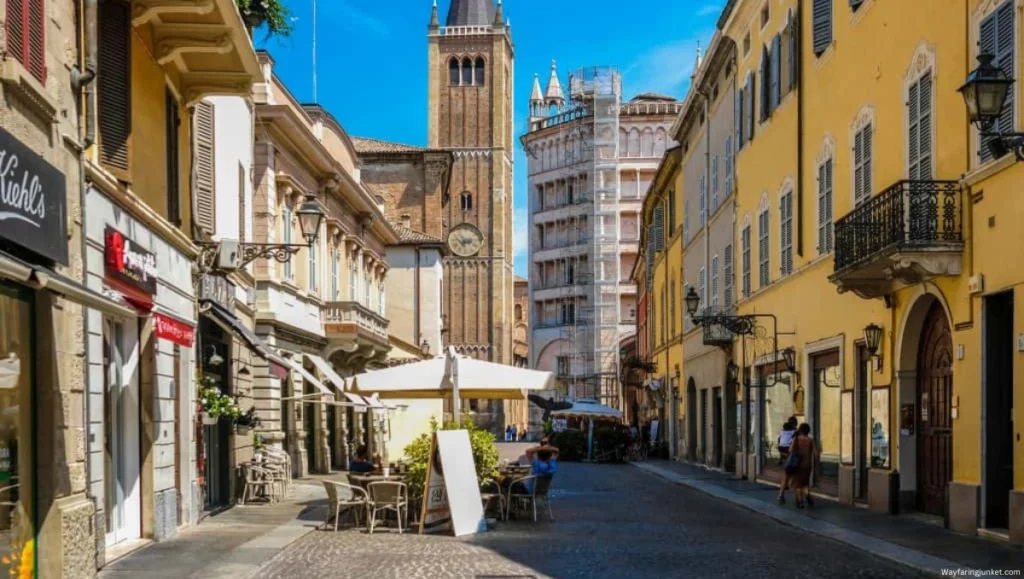
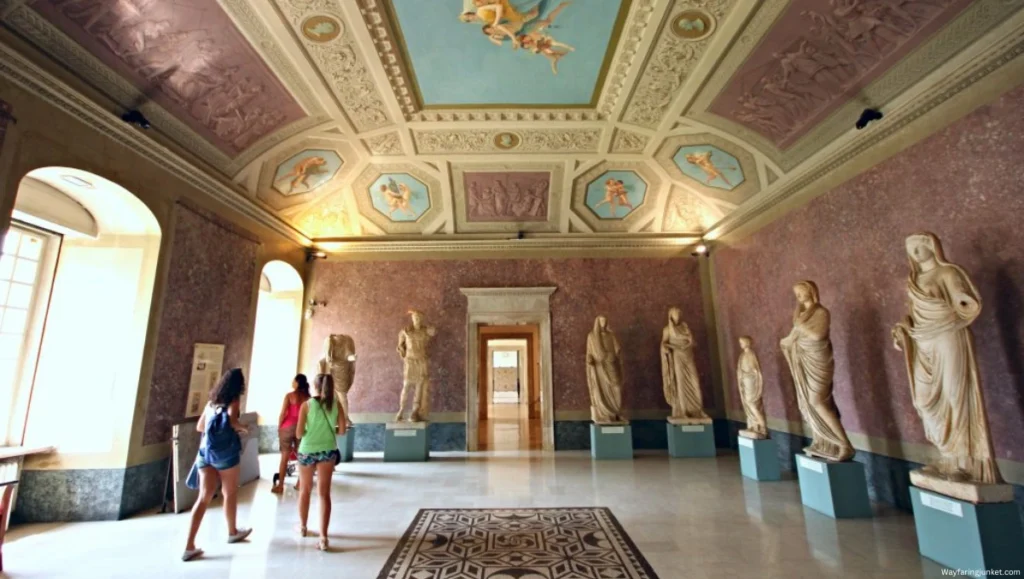
Parma, located in the heart of Italy’s Emilia-Romagna region, is a city synonymous with culinary excellence, musical heritage, and elegant architecture. Known as the birthplace of Parmigiano Reggiano cheese and Prosciutto di Parma, it offers a gastronomic experience like no other.
Best Things to Do in Parma
1. Explore Piazza Duomo and Its Architectural Gems:
Begin your Parma adventure at Piazza Duomo, a historic square that houses the breathtaking Parma Cathedral and the striking Baptistery of Parma. Admire the cathedral’s exquisite Romanesque architecture and the magnificent frescoes by Correggio, a Renaissance masterpiece. The octagonal Baptistery, adorned with pink Verona marble, is a testament to Parma’s artistic legacy.
2. Visit the Galleria Nazionale:
Art lovers will be captivated by the Galleria Nazionale within the grand Palazzo della Pilotta. This prestigious gallery features an extensive collection of works by renowned Italian masters like Leonardo da Vinci, Correggio, and Canaletto, offering a deep dive into Italy’s rich artistic heritage.
3. Experience Parma’s Musical Heritage:
Parma’s strong connection to the legendary composer Giuseppe Verdi makes it a cultural haven for music enthusiasts. Immerse yourself in the world of Italian opera at the iconic Teatro Regio di Parma, one of the country’s most revered opera houses, known for its elegant design and world-class performances.
4. Relax at Parco Ducale:
Escape the bustle of the city with a visit to Parco Ducale, a lush 16th-century park nestled along the Parma River. Stroll through tree-lined avenues, admire serene fountains, or enjoy a peaceful picnic amidst beautifully landscaped gardens. The park’s tranquil ambiance makes it a perfect spot to unwind and recharge.
What to Eat in Parma
Parma is a paradise for lovers of fine food. Savor these authentic local delicacies:
- Tortelli d’erbetta: Fresh pasta stuffed with a rich blend of ricotta and herbs, a true taste of Parma’s culinary tradition.
- Parmigiano Reggiano: The world-renowned cheese, rich, nutty, and full of flavor, perfect for grating over pasta or enjoying on its own.
- Prosciutto di Parma: Delicate dry-cured ham, often paired with melon or enjoyed with fresh bread and local wines.
For an unforgettable experience, visit a local cheese or ham producer to witness the traditional craftsmanship behind these iconic products.
19. Verona, Veneto


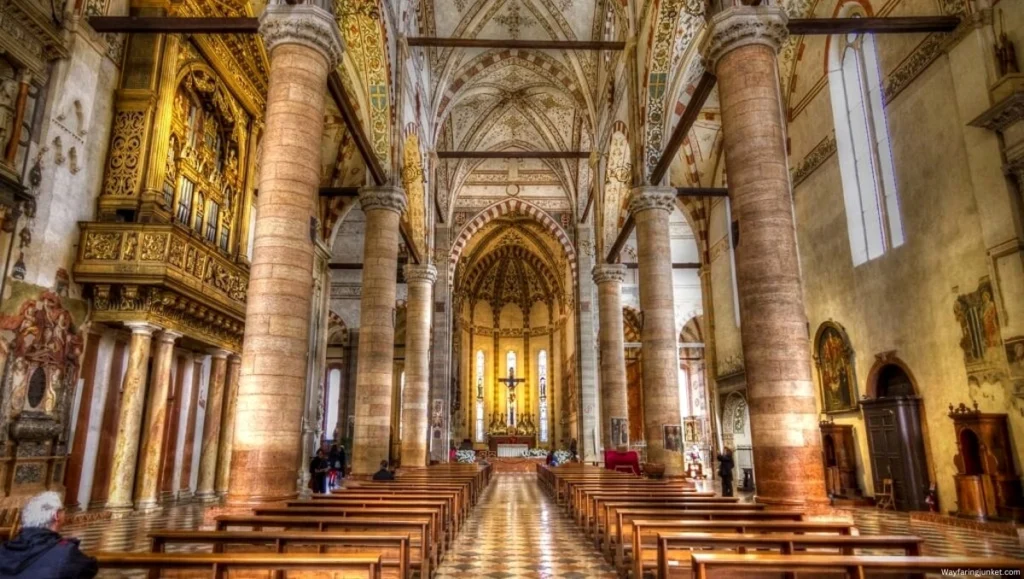
Verona, the city of romance immortalized in Shakespeare’s Romeo and Juliet, is a captivating destination that seamlessly blends ancient history with vibrant modern life. Located in the Veneto region, it offers visitors a picturesque setting of medieval architecture, Roman ruins, and charming piazzas.
Best Things to Do in Verona
1. Explore the Arena di Verona:
Step into ancient history at the Arena di Verona, a remarkably preserved Roman amphitheater. Every summer, it hosts the iconic Verona Opera Festival, offering the unforgettable experience of enjoying world-class performances under the stars in this grand setting.
2. Visit Juliet’s House (Casa di Giulietta):
Literature lovers shouldn’t miss Juliet’s House, where the famous balcony attributed to Shakespeare’s tragic heroine draws visitors from around the world. Though the story is fictional, the romantic ambiance is palpable, with countless love letters left on the courtyard walls.
3. Stroll Through Piazza delle Erbe:
Discover the vibrant energy of Piazza delle Erbe, once a Roman forum and now a bustling square surrounded by colorful frescoed buildings, historic monuments, and inviting cafes. It’s the perfect spot to enjoy a leisurely espresso or browse local market stalls.
4. Admire Piazza dei Signori:
For a quieter atmosphere, head to the elegant Piazza dei Signori. Surrounded by majestic Renaissance buildings and featuring a striking statue of Dante Alighieri, this square exudes historical charm and offers a moment of tranquility.
5. Climb Torre dei Lamberti:
For breathtaking views of Verona’s terracotta rooftops and the surrounding countryside, ascend the Torre dei Lamberti. The 368-step climb is well worth the panoramic vistas from the top.
6. Cross Ponte Pietra:
Experience one of Verona’s most picturesque sights by walking across the Ponte Pietra, an ancient Roman bridge spanning the Adige River. At sunset, the views from the bridge are especially magical, capturing the essence of the city.
7. Explore Castelvecchio Museum:
History enthusiasts will be captivated by Castelvecchio, a magnificent 14th-century fortress now serving as a museum. Wander through its impressive collection of medieval art, sculptures, and artifacts, offering a deeper understanding of Verona’s rich past.
What to Eat in Verona
Verona’s cuisine is as rich and vibrant as its history. Enjoy these traditional specialties:
- Risotto all’Amarone: A creamy, rich risotto made with the region’s signature Amarone wine, providing a deep, flavorful experience.
- Pastissada de Caval: A hearty horse meat stew, slow-cooked with red wine and aromatic spices, offering a true taste of Veronese tradition.
Pair your meal with a glass of Valpolicella or Soave wine for an authentic taste of the region.
20. San Marino
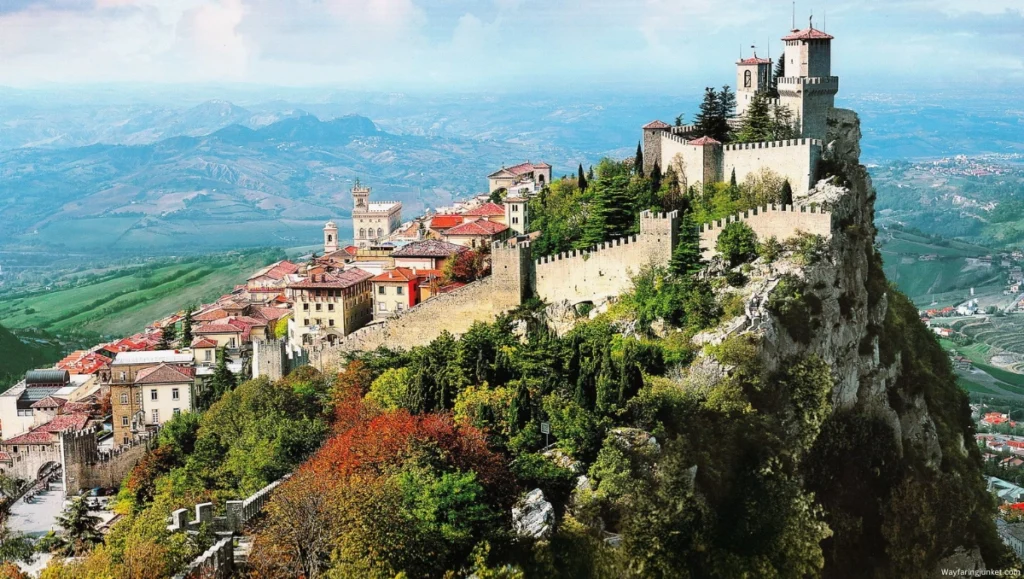

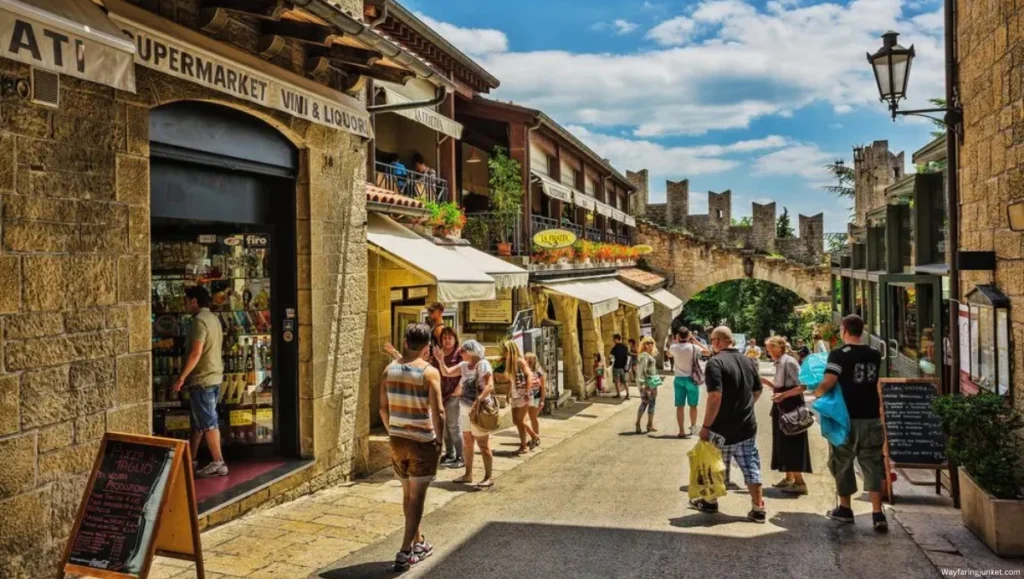
Perched atop Mount Titano, San Marino is one of the world’s oldest republics and offers a charming blend of medieval history and breathtaking views. Surrounded entirely by Italy, this microstate is a UNESCO World Heritage Site that beckons travelers with its ancient fortresses, cobblestone streets, and vibrant cultural heritage.
Best Things to Do in San Marino
1. Visit the Three Towers:
Explore the iconic Guaita, Cesta, and Montale towers perched atop Mount Titano. These medieval fortresses offer spectacular views of the surrounding countryside. Guaita, the oldest and most renowned, once served as a defensive stronghold, while Cesta now houses the Museum of Ancient Weapons, featuring an impressive collection of historical armaments.
2. Stroll Through Piazza della Libertà:
Experience the vibrant heart of San Marino in Piazza della Libertà, home to the grand Palazzo Pubblico, the seat of government. Watch the Guards of the Rock perform their ceremonial changing of the guard, adding a touch of tradition to your visit. The square’s elegant surroundings make it an ideal spot to soak in the atmosphere.
3. Visit the Basilica di San Marino:
Admire the neoclassical beauty of the Basilica di San Marino, dedicated to the republic’s patron saint. The basilica’s striking Corinthian columns and intricate artwork create an ambiance of reverence. Inside, you’ll find the preserved relics of Saint Marinus, making this a significant spiritual site.
4. Explore the State Museum:
Dive into the rich history of San Marino at the State Museum within the Palazzo Pergami Belluzzi. The museum boasts an extensive collection of archaeological artifacts, medieval art, and historical documents, providing valuable insights into the nation’s long-standing independence and cultural heritage.
5. Shopping in San Marino:
Take advantage of San Marino’s tax-free shopping by exploring the charming boutiques and specialty shops. From luxury fashion and jewelry to artisanal crafts and ceramics, the city’s streets offer something for every shopper. Stroll through Contrada del Collegio for unique souvenirs and locally-made goods.
6. Outdoor Adventures:
Nature enthusiasts will enjoy exploring the scenic hiking trails around Mount Titano. The well-maintained paths offer breathtaking views of the Italian countryside, making them perfect for leisurely walks or invigorating hikes. Capture stunning photos of the landscape and embrace the fresh mountain air.
What to Eat in San Marino
San Marino’s cuisine reflects a delightful blend of Italian and local traditions. Some must-try dishes include:
- Torta Tre Monti: A delicious layered hazelnut wafer cake, symbolizing the three towers of San Marino.
- Piadina Sammarinese: A traditional flatbread served with cheese, cured meats, and fresh vegetables.
- San Marino Wine: Enjoy a glass of locally produced red or white wine, perfect for pairing with regional delicacies.
Final Thought: Embark on Your Italian Journey
Italy’s diverse cities offer an unparalleled blend of old-world charm and modern vibrancy. From the bustling streets of Naples, the serene canals of Venice, and the artistic grandeur of Florence to the coastal beauty of Tropea, there’s something for every type of traveler. Each visit gives you a deeper appreciation of Italy’s culture, history, and way of life.
As you plan your Italian adventure, remember that every cobblestone street and bustling piazza holds a story waiting to be discovered. Buon viaggio, and don’t forget to subscribe to our email list for travel tips, insider guides, and the latest updates on the best destinations in Italy!
Frequently Asked Questions (FAQs) about the Best City of Italy to Visit
Many consider Florence, Venice, and Rome among Italy’s top 10 most beautiful cities. Each offers its unique charm, from Florence’s Renaissance art and architecture to Venice’s romantic canals and Rome’s ancient landmarks.
Rome is an ideal choice for first-time visitors, providing a mix of iconic landmarks like the Colosseum, Vatican City, and Trevi Fountain. Florence and Venice are also excellent introductions to Italy’s culture and history, making them part of the top 3 places to visit in Italy.
Venice tops the list for romance, with its enchanting canals and gondola rides. Verona, the setting of Shakespeare’s Romeo and Juliet, and the coastal beauty of Amalfi are also popular for couples.
Florence and Trieste are often considered the best cities to live in for their cultural vibrancy, and quality of life. Rome offers a historic and lively atmosphere, while Bologna and Turin are great options for a more relaxed lifestyle with excellent food and local charm.
Bologna, known as the food capital of Italy, is famous for dishes like tagliatelle al ragù and tortellini. Naples is a must-visit for authentic Neapolitan pizza, while Sicily offers a delightful mix of Mediterranean flavors.
Milan is Italy’s fashion capital, offering luxury boutiques, designer brands, and world-renowned shopping districts like Via Montenapoleone. Florence also has excellent leather goods, while Rome offers a mix of high-end and artisanal shopping.
Amalfi, Positano, and Sorrento along the Amalfi Coast offer stunning views and picturesque beaches. Cinque Terre and Portofino also provide unforgettable coastal experiences. For a more laid-back seaside retreat, consider Puglia’s Polignano a Mare.
Florence is the heart of Renaissance art, home to the Uffizi Gallery and Michelangelo’s David. Rome’s ancient ruins, like the Colosseum and the Roman Forum, are unparalleled, while Venice offers iconic landmarks like St. Mark’s Basilica and the Doge’s Palace.
Naples, Palermo, and Genoa tend to be more budget-friendly compared to Rome, Venice, or Milan. These cities offer authentic Italian experiences, delicious cuisine, and cultural attractions without the high price tag.
Rome is great for families with its mix of historical sites and kid-friendly activities. Florence offers interactive museums, while Lake Garda and its amusement parks are perfect for a family getaway.
Milan and Rome are famous for their vibrant nightlife, offering trendy bars, clubs, and live music. Naples also has a buzzing local scene with authentic music venues, while Rimini on the Adriatic Coast is popular for beachside parties.
Florence is a prime location for day trips to Pisa, Siena, and the Chianti wine region. From Rome, you can easily visit Tivoli or Orvieto. Milan is perfect for exploring Lake Como, while Venice offers excursions to Murano and Burano.
Spring (April to June) and Fall (September to October) are the best times to visit Italy. The weather is pleasant, crowds are manageable, and cities host various festivals and cultural events.
Milan and Rome offer world-class luxury hotels, Michelin-starred restaurants, and designer shopping. Venice is ideal for an elegant getaway with its iconic canalside palaces and 5-star accommodations.
Yes, major cities like Rome, Milan, and Naples have efficient metro, tram, and bus networks. Venice is unique with its vaporetto (water buses) for transportation. For intercity travel, Italy’s high-speed trains are reliable and convenient.
- Rome: A treasure trove of ancient history, offering iconic landmarks like the Colosseum and Vatican City.
- Florence: The birthplace of the Renaissance, renowned for its museums, art, and stunning architecture.
- Venice: A romantic and picturesque city known for its canals, gondolas, and charming bridges.
- Milan: Italy’s fashion and design hub, perfect for shopping, luxury experiences, and modern culture.
- Naples: A vibrant coastal city famous for its rich history, authentic pizza, and proximity to Pompeii and Amalfi.

